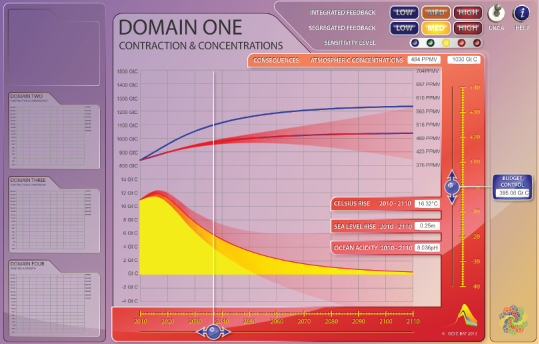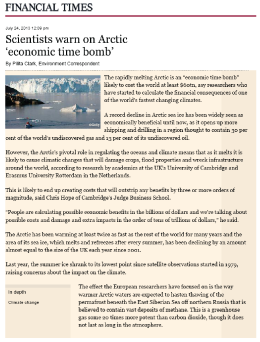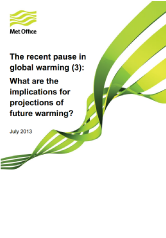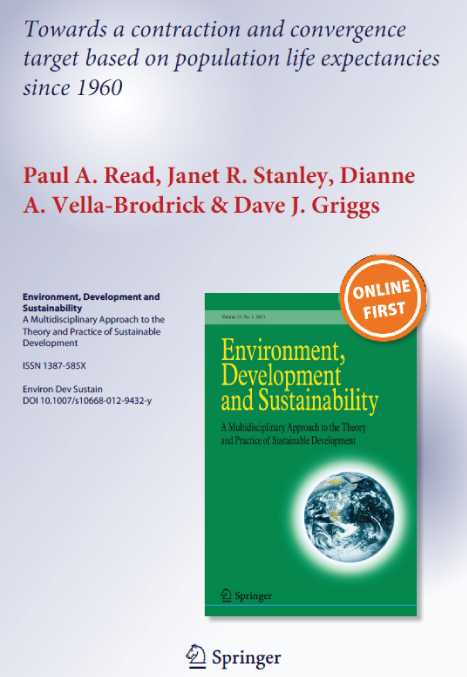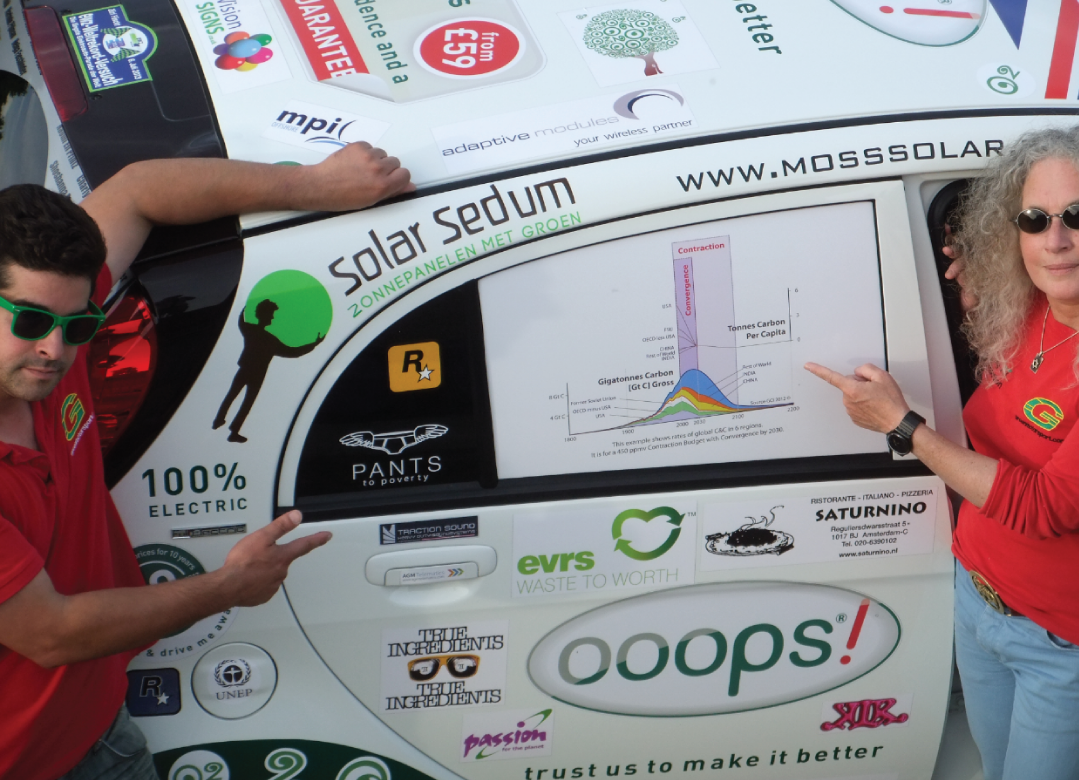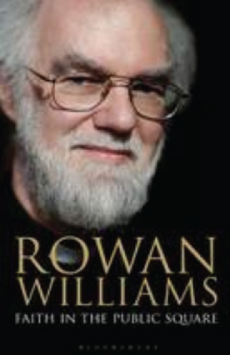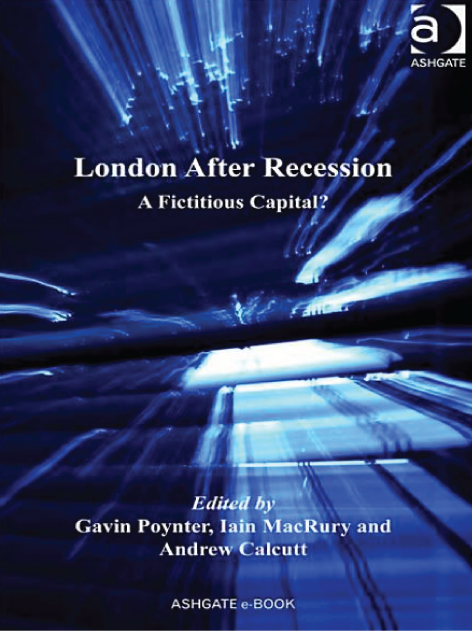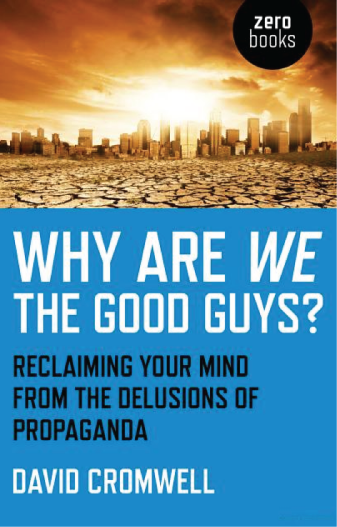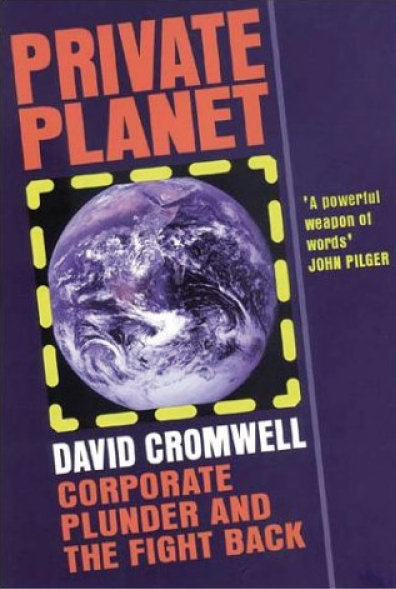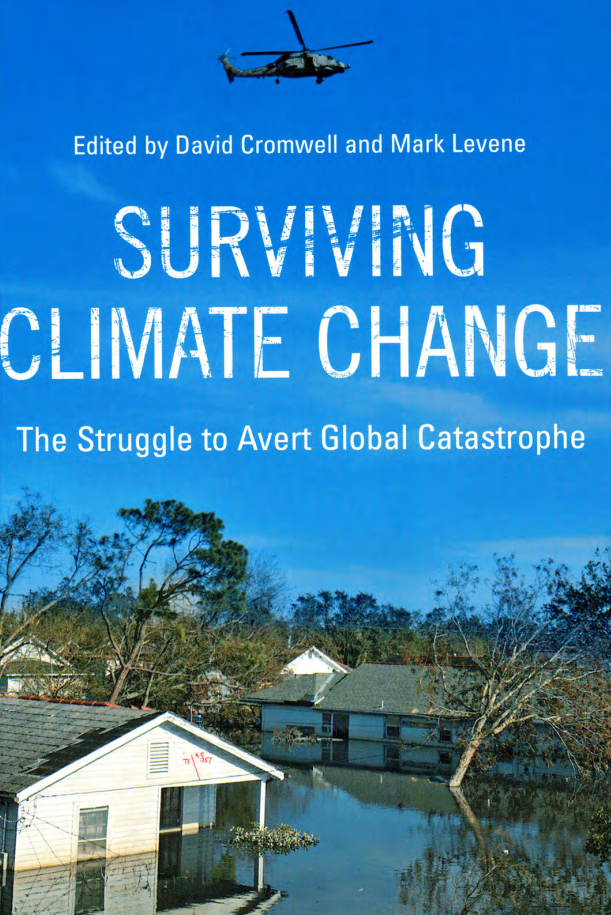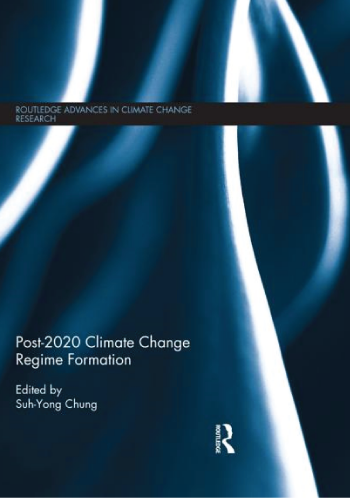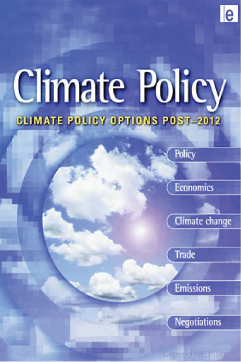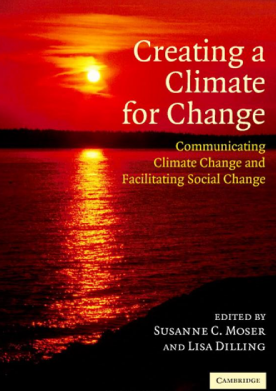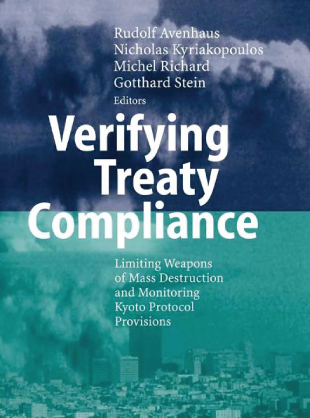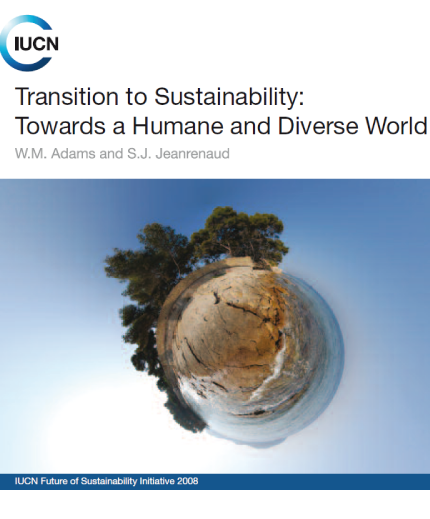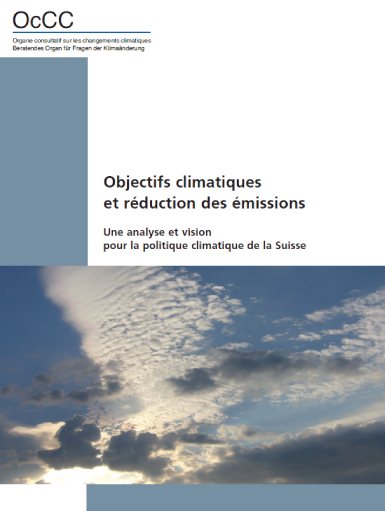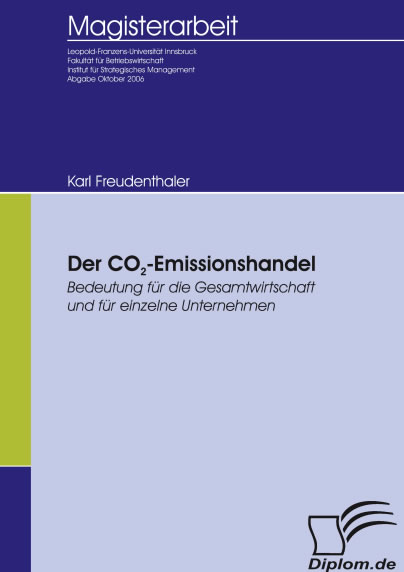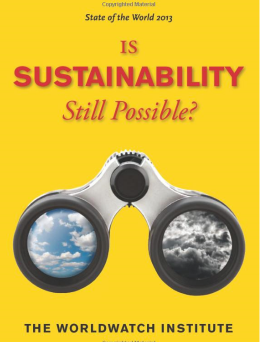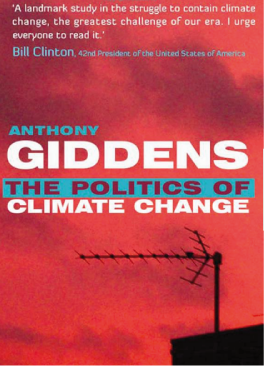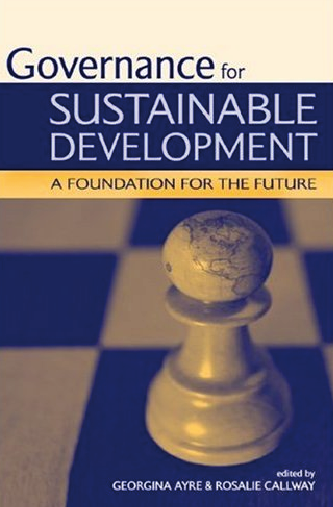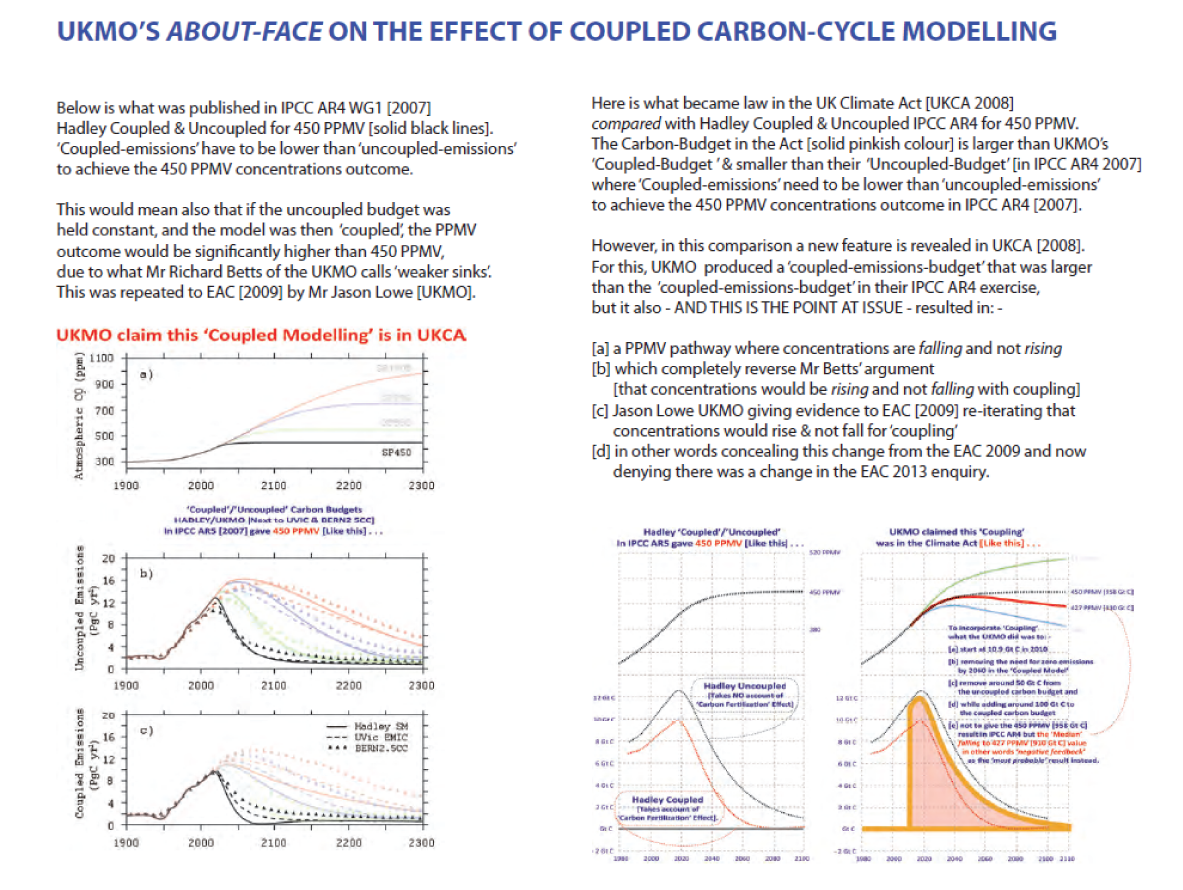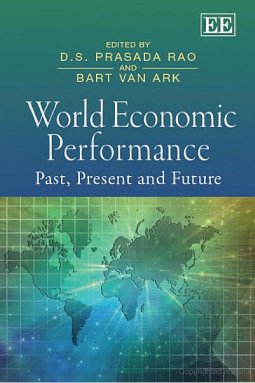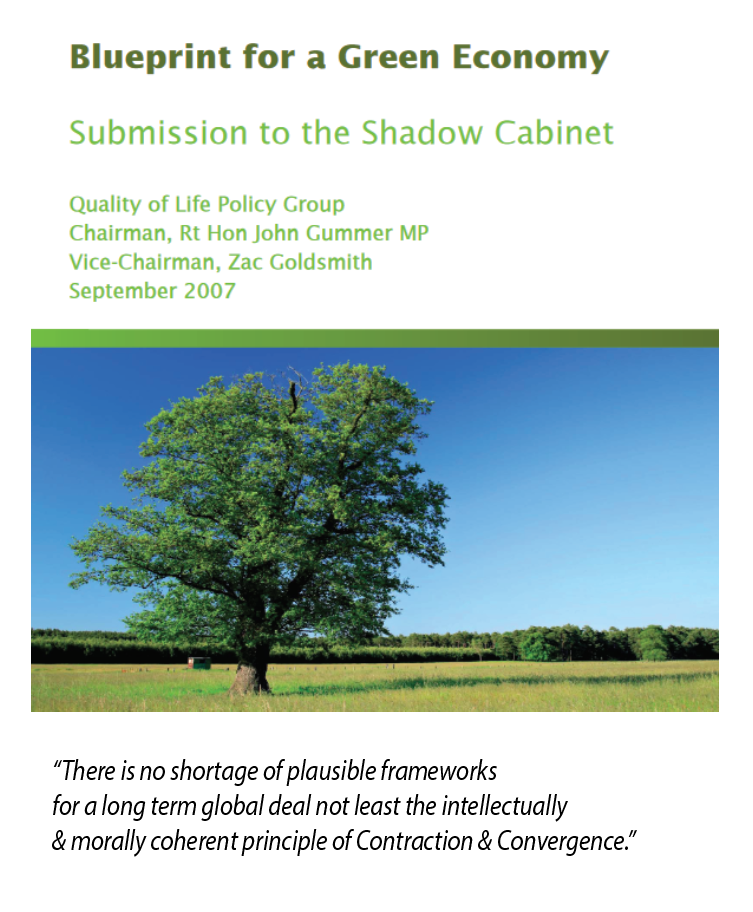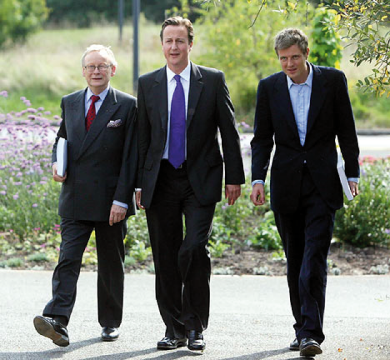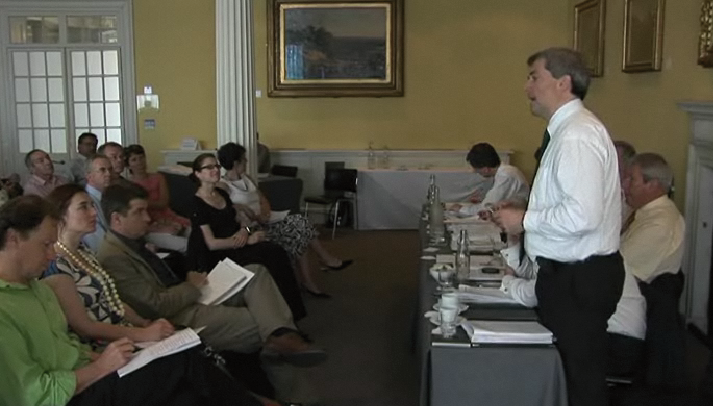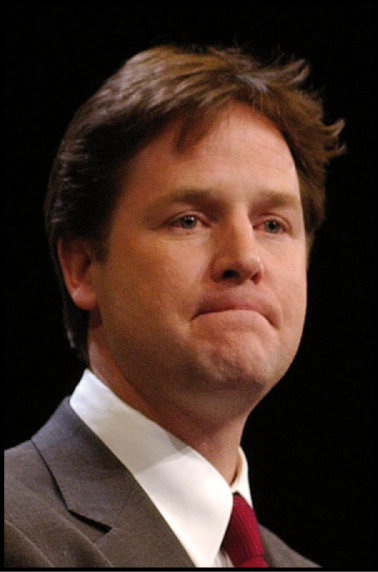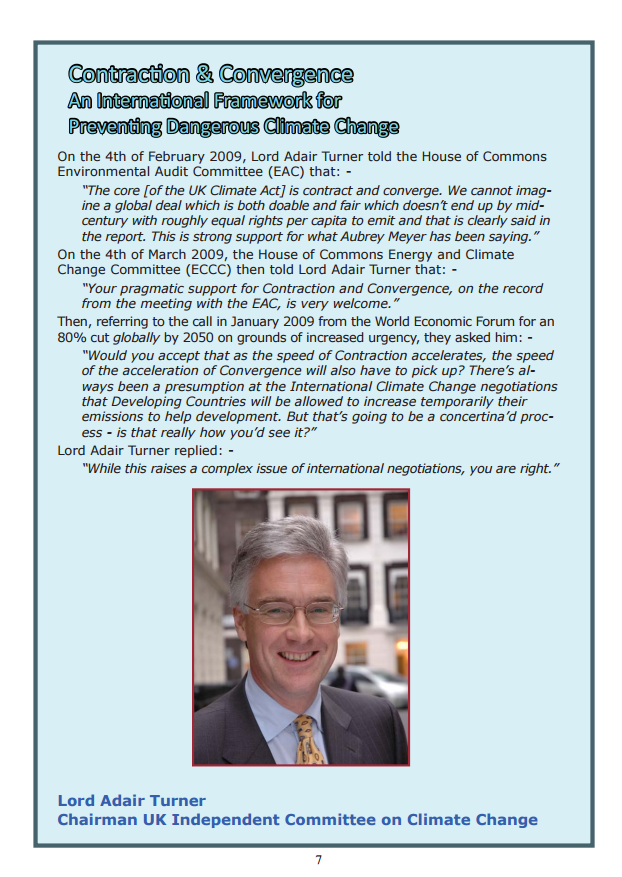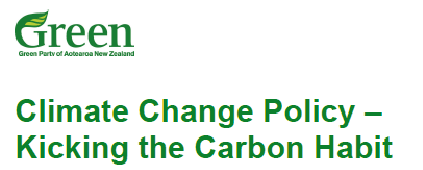Scientists warn on Arctic Economic Time Bomb- FT
"We calculate that the costs of a melting Arctic will be huge, because the region is pivotal to the functioning of Earth systems such as oceans and the climate. The release of methane from thawing permafrost beneath the East Siberian Sea, off northern Russia, alone comes with an average global price tag of $60 trillion in the absence of mitigating action — a figure comparable to the size of the world economy in 2012 (about $70 trillion). The total cost of Arctic change will be much higher."
Vast costs of Arctic change - Methane released by melting permafrost will have global impacts
that must be better modelled, say Gail Whiteman, Chris Hope and Peter Wadhams.
26 July 2013 - More evidence to EAC Enquiry; "UKMO's omission of positive feedbacks is very serious." Dr Ulrich Loening
Further written evidence submitted by Aubrey Meyer, GCI
Written evidence submitted byDr Ulrich Loening, former Director of the Centre for Human Ecology, University of Edinburgh
Written evidence submitted by Dr Mayer Hillman, Senior Fellow Emeritus at Policy Studies Institute, University of Westminster.26 July 2013 - Pressure on UKMO working? "Methane from permafrost melt is likely to increase expected warming."
Finally, much of the interest in Equilibrium Climate Sensitivity [ECS] relates to the amount of warming that would result if the radiative forcing were stabilised. In reality, other Earth system feedbacks, associated for example with the cycling of carbon through natural systems and releases of carbon from permafrost melt, will change, and are likely to increase the actual expected warming (see e.g. Knutti et al 2013).
What is evident is that, even for the more conservative estimates derived from observations, the prospects of substantial global warming by the end of the century are not materially altered by the recent pause in global surface warming.
The recent pause in global warming (3):
What are the implications for projections of future warming?
July 2013
26 July 2013 - "Contraction and Convergence, the paramount priority." Arctic Sea Ice Forum|
Contraction & Convergence: the paramount priority
May 07, 2013, 01:16:17 PM
With the seductive Washington propaganda that with renewables' investment the 'free market' can resolve global warming - despite any fossil fuels locally displaced being bought and burnt elsewhere due to the lack of a climate treaty - there is sadly little public understanding of the actual priorities for action. This thread is intended to address any such confusion here on ASI by focussing on the seminal advance of the climate negotiations via the adoption of the global climate policy framework of "Contraction and Convergence".
For the authoritative overview of the policy see the Global Commons Institute site at www.gci.org.uk . In essence C&C is about setting a scientifically valid global carbon budget out to 2050, with tradable national allocations of emissions permits declining annually under that budget while they also converge from the present roughly GDP-based shares of global emissions to per capita parity by an agreed date. The permits' tradability between nations allows the essential flexibility for unknown future needs, while also maximizing the rate of investment in the requisite industrial reform and in the adoption of sustainable technologies in developing nations.
The policy has been promoted in the UNFCC negotiations since 1990, and is now tacitly or explicitly recognized as the "inevitably required" basis of the treaty by many nations and unions, including the EU, Brazil, Australia, India, African Nations' Group, China and many others. The USA is on record in the final hours of the Kyoto negotiations as deflecting the demand from the Africa group and from India for C&C to form the basis of the Kyoto Protocol with the acknowledgement that C&C may be needed for a future comprehensive agreement.
To give an idea of just how much discussion of and publications on C&C is going on at the academic level among those whose expertise is in international relations, global development, public health, ethics, etc, (which can be seen as a proxy measure for the level of diplomatic attention) here is the news list so far for May on GCI's site, with one post's content shown as an example.
05 May 2013 - "C&C has been endorsed by Angela Merkel." Economic Thought & US Climate Change Policy David Driesen
04 May 2013 - "C&C is essentially Pragmatic" Energy & Climate Change Professor David Coley University of Bath
04 May 2013 - "C&C - there's much to recommend it." The Tierra Solution Resolving Climate Change Frans C Verhagen
04 May 2013 - "An unprecedented degree of international cooperation underlies C&C." Economic Growth & Development P N Hess
03 May 2013 - C&C as seen by IPIECA 2012
03 May 2013 - "C&C is 'Plan B' ." Towards Understanding Community People & Places Christopher Mary Madden Laura Potts
03 May 2013 - C&C; Bouquets & Brickbats from Julienne Ford in Never Point at a Rainbow, An Introduction to Radical Logic
02 May 2013 - "C&C Campaigning for Global Justice" Air, the Environment and Public Health." Anthony Kessel
01 May 2013 - "Agreeing rates of C&C; the central challenge of International climate negotiations." Reframing Climate Jaeger et al
01 May 2013 - "Known for obvious reasons as C&C." Ethics an Overview, Robin Attfield
01 May 2013 - "C&C this elegant solution; key to implement a Green Economy." Greening the Academy; Fassbinder, Noella, Kahn
01 May 2013 - "Some form of C&C is essential." What's Wrong with Climate Politics & How to Fix It. Paul Harris
01 May 2013 - C&C in 'Any Way You Slice It' S. Cox "GCI led; global emissions contract dramatically, per capita emissions converge."
01 May 2013 - "C&C towards a global network society." Another take on Contraction & Convergence - David Leevers BA MIEY
01 May 2013 - "Per Capita; C&C; Historical Per Capita" Positioning in Advances in Control & Communication D Zeng
"Agreeing rates of C&C; the central challenge of International climate negotiations." Reframing Climate Jaeger et al
The central challenge of international climate negotiations is to agree upon the rate or contraction and convergence of the per capita emissions of all countries - an approach that was first discussed in the 1990s and has meanwhile become a basic pillar of UNFCCC.
Typical transformation paths computed under the budget constraint implied by the 2°C global warming limit yield total emissions peaking around 2020, decreasing rapidly thereafter to very low values by the middle of the century. The later the emissions peak, the more rapid and challenging the required subsequent rate or decrease. To satisfy realistic contraction and convergence criteria, the emissions of the industrialized countries need to start decreasing immediately in order to accommodate longer emission growth phases for the emerging and less developed economics.
Adherents of the top-down approach argue that the global interdependencies mandate global solutions in the form of binding international climate agreements. The most straightforward way to realize equitable contraction and convergence trajectories, for example, would be to apply a 'stick' policy in the form of a global cap-and-trade system generalizing various regional or nationaJ cap-and·trade systems, such as the European Emission Trading System (ETS). or similar schemes in the US.
In the approach proposed by Wicke and Durr-Pucher (2006), for example, each country would be assigned a total number of emission permits proportional to its population, in accordance with the principle of equal per capita emission rights. Countries with low per capita emissions would then be able to sell their initially surplus emission rights to countries with higher per capita emissions, thereby achieving two important objectives: (i) global investments would be attracted into the most effective channels for reducing emissions; (ii) capital and technology would be transferred from the industrial countries to the emerging and less developed countries.
Lewis Cleverdon
19 July 2013 - Award-Winning Documentary on the Hazards of Geo-Engineering for Weather Modification [A Shocker]18 July 2013 - "As is, the UK Climate Act is not fit for purpose." Southport Reporter, Liverpool
"As is, the UK Climate Act is not fit for purpose"
THE UK Climate Act (UKCA) has been deemed unfit for purpose by the Green Party as evidence comes to light that the Met Office used flawed modelling, when advising government on the creation of the UK Climate Act and its carbon emissions budget.
The UK Met Office, in conjunction with the UK Climate Change Committee, prescribed a national emissions control regime for the UK [an 80% emissions cut by 2050] as the UK's 'equitable share' of an international agreement mooted to avoid dangerous rates of Climate Change [a 100% emissions cut globally by 2100].
By their own admission, the Act omits major climate-altering feedback effects such as CO2 and CH4 emissions release and atmospheric concentrations rising from melting permafrost. This omission alone is alarming and by definition renders the UKMO's whole prognosis of 'climate-control' inadequate, unreliable and complacent at best.
Aubrey Meyer, Director of the Global Commons Institute, who devised contraction and convergence as a solution to dangerous climate change said:- "It is alarming that a whole range of these significant and potentially very dangerous feedback effects are still – after 20 years - being entirely omitted from the UKMO's 'climate models'. Moreover, UKMO is now feeding this work into the preparations for the IPCC 5th Assessment due in 2014. A growing danger of emissions from Permafrost melt for example is that human efforts to control human 'budget-emissions' can become overwhelmed by the accelerating release of the non-human 'feedback emissions' that will occur uncontrollably as the planet warms. To continue making these omissions now, aids and abets the cause of climate-deniers, people who have already rightly been accused of crimes against humanity by James Hansen."
Aubrey Meyer recently gave evidence to the Environmental Audit Committee where he outlined the flawed thinking of the UK Met Office.
The Green Party with other Green Parties around the world has advocated the policy framework of Contraction and Convergence [C&C] since 1998. It is widely recognized that the UK Climate Act of 2008 is based on C&C. However, by prescribing contraction by 2100 with convergence by 2050, it asserted rates of C&C that are inadequate and inequitable.
While the C&C Principle is correct, in practice the rates-prescription in UKCA is incapable of generating the international consensus necessary to achieve UNFCCC-compliance. Global emissions contraction must be fast enough to achieve the objective of the UN Framework Convention on Climate Change [UNFCCC] on a precautionary basis [for example 100% contraction by 2050]. Within this, international convergence on equal shares per person must be negotiated to a rate fast enough to satisfy the Convention's Equity Principle by rapidly reconciling the growing gap between over-consumers and under-consumers [for example convergence by 2020 or 2030].
Establishing such an agreement, would free humanity from the international deadlock that has frustrated negotiations for the last 20 years. It would create a new momentum of creativity and common purpose and give future generations better prospects than those they face without it.
Glamorous Eco girl Sarah Gibbon is set to fly the green flag for Liverpool at Miss Earth National Final.
A dream is becoming a reality for 22 year-old, local girl Sarah Gibbons from Aintree, after being selected to take to the stage hoping to go on to become Miss Earth 2013. Sarah has reached the national finals of Miss Earth this August in the magical Ballroom of the world famous Blackpool Tower leading to the selection of this years England representative at the televised world final of Miss Earth.
Miss Earth aims to find a green & glamourous girl to represent the Liverpool region in the Miss Earth finals to promote environmental awareness and animal protection in Aintree.
Sarah is currently studying a Degree in a Zoology said:- "I am so very much looking forward to the Miss Earth final as I have never entered a beauty pageant before and I believe strongly in the message of environmental awareness and have much experience with reconnecting people to the natural world and hope I can make the community of Liverpool proud of me at the Grand Final."The Grand Final will be held at the world famous Blackpool Tower Ballroom in the UK's most popular seaside town of Blackpool. Girls from all England, Scotland, Wales and Northern Ireland will be vying for the top prize of winning a place to represent their Country at the world finals of Miss Earth, one of the top 3 biggest international beauty events in the world. The winner of Miss Earth will also have the opportunity to work as an Ambassador to environmental protection campaigns worldwide and empower the younger generation to focus on Animal protection and promote environmental awareness for a clean, natural and healthy environment.
Finalists after the final continue the Miss Earth legacy and organise tree planting events and become involved with community charity projects through Girls4Trees giving funds generated through the glittering final of Miss Earth to UK projects, schools and organisations in their hometown.
Sarah is now set with a challenge in her bid to become Miss Earth. She is to help promote a cleaner and healthier environment in her local community, for the chance to walk away "The Eco Green Award winner" and is also set with a challenge to raise funds for Miss Earth's community project 'Girls4Trees', where funds raised from participation in Miss Earth will go to organisations and school's to help fund street clean ups and community projects.
Sarah expressed how excited she is and hopes to win to be able to promote such a campaign through Miss Earth, and hopes to go on to win so she can help transform Liverpool and surrounding areas from the funds raised.
Miss Earth is celebrating it's 13th year of beauty and responsibility as an international televised beauty and award ceremony. Miss Earth is unique in terms of beauty awards across the globe as it has a positive message of promoting environmental and animal protection awareness.
The winner of Miss Earth will receive an impressive prize package, including a once in a lifetime trip to the international final Miss Earth and an enviable prize list to include a stunning collection of Aqua Green Eco Swim each/swimwear made from recycled material and plastic bags, photo shoot, five outfits from Tcharakoura, wardrobe of the Dress Studio glamourous evening gowns to wear at the world final, EarthniCity natural cosmetics, an exclusively Annibee eco bag, a head to toe eco makeover by Puro Hair eco salon and many more fabulous prizes.
After the eventual eco-beauty winner is crowned she will join over 100 country's vying for the chance to become an Ambassador for environmental protection campaigns worldwide with the hope of bringing the Miss Earth 2013 crown home. The current winner is Tereza Fajksova from Czech Republic.
For more information on Miss Earth visit:- missearthgirls.co.uk.
18 July 2013 - "C&C - the implications for Climate Science." Target based on population life expectancies Read et al Springer
One principle that tries to balance the dilemma is contraction and convergence (C&C).Although the implementation rate was a stumbling block at Copenhagen and Durban (Meyer and O’Connell 2010), C&C begins to provide a fair platform for multilateral negotiations. This principle (see Global Commons Institute (GCI) 1996) first assumes that global CE will negatively impact human and planetary health in the longer term and so must be ‘contracted’ if we care about the likely impact on younger generations (e.g. Sherwood and Huber 2010). If it were not a normal public good, this would not present a problem, but because CE is tied to economic development (York et al. 2003; Rosa et al. 2004), it means any pursuit of global contraction could result in recession or depression amongst advanced economies. This was suggested when the global financial crisis (GFC) reduced world emissions (see Jotzo et al. 2012). Although there is resistance to the idea of contraction, whether by a Pigovian tax or a trading scheme (Garnaut 2011), climate science suggests we have no choice. The alternative could be resource and energy wars and further destruction of ecologies subserving human survival (e.g. Parry et al. 2004; Thomas et al. 2004; Malcolm et al. 2006). The second element of C&C is ‘convergence’, where every nation must be granted an equal portion of emissions per capita under a constrained global budget (Global Commons Institute (GCI) 1996). This applies the same ethical principle of unity across nations as contraction applies across generations (see Stern 2006; Nordhaus 2007). Together, the two principles of C&C try to balance the carbon budget across every living person, both now and in the future.
Having defined C&C, we can now look at the implications of the climate science. Hansen’s conservative budget of 750 Gt would mean around 450 Gt will be subtracted from the cumulative budget by mid-next year, leaving 300 Gt remaining. Given a global population of 6.8 billion in 2011 that leaves a C&C target of only about 1.3 tonnes per capita for every year leading up to 2050. The more optimistic Meinshausen budget allows 1.8 tonnes for a population heading towards 9.2 billion by 2050 (United Nations Population Division 2011), roughly matching Stern’s original suggestion of 2 tonnes per capita in 2008 (Stern 2008). The problem is that both are a much greater challenge to advanced
economies than the global average of 6 tonnes per capita. They also suggest the current rate of technological development aimed at decoupling growth from CE (see Steinberger et al. 2012) will not avoid the 2 C limit. It appears that widespread and dramatic mitigation and
adaptation is inevitable, advanced economies must contract their emissions and developing countries should not pursue parity at the upper levels.
The current paper explores what these C&C targets might mean for human LE, hoping there might be a more optimistic outcome. Before describing the methods, we outline evidence suggesting economic growth might not offer positive, monotonic and linear returns on human welfare in the first place. In fact, there may be reasons why developing nations should not expect linear gains in human welfare from carbonised growth beyond a certain limit. If stable, this limit might offer a more optimistic C&C target up to 2050.
Towards a Contraction and Convergence target based on population life expectancies since 1960
Paul Read Janet Stanley Dianne Vella_Brodrick, Dave J Griggs17 July 2013 - "Environmentally conscious Motorsport." Green Motor Sport, path leader against climate change, advertise C&C.Green MotorSport Limited
Recognised as the first motor sport company to research "Green Motorsport". World leader in environmentally conscious motor sport founded by "Gordon Foat". July 4th 2001. Stimulating & exploiting research into Future Energies and reducing motor sports Carbon Footprint and to bring new Zero Carbon technologies into the market place & make motor sport greener. Our mission is to become the premier motor sport company solely devoted to environmental racing and applied green zero carbon automotive technology. Emphasis on research & testing high power AC and DC electric motors, high power micro processor speed controllers, electronic differential technologies, super fast rapid chargers for electric vehicles, vehicle to grid technology, alternative future energies, electric drive trains, safe high capacity energy storage technologies. Green MotorSport brings technology and environmental issues to everyone’s attention making learning about renewable energy and energy efficiency interesting and exciting. It was thought that an environmental indicator was needed to explain and highlight these new emerging technologies. Green MotorSport bridges the technology education gap with its educational concepts.
Contraction & Convergence
Aubrey Meyer’s C&C is an emissions management model that relates to the 'objective' and the 'principles' of the United Nations Framework Convention on Climate Change [UNFCCC]. Contraction refers to the 'full-term event' in which the future global total of greenhouse gas [GHG] emissions from human sources is shrunk over time in a measured way to near zero-emissions within a specified time-frame. The example below shows 90% by 2100.
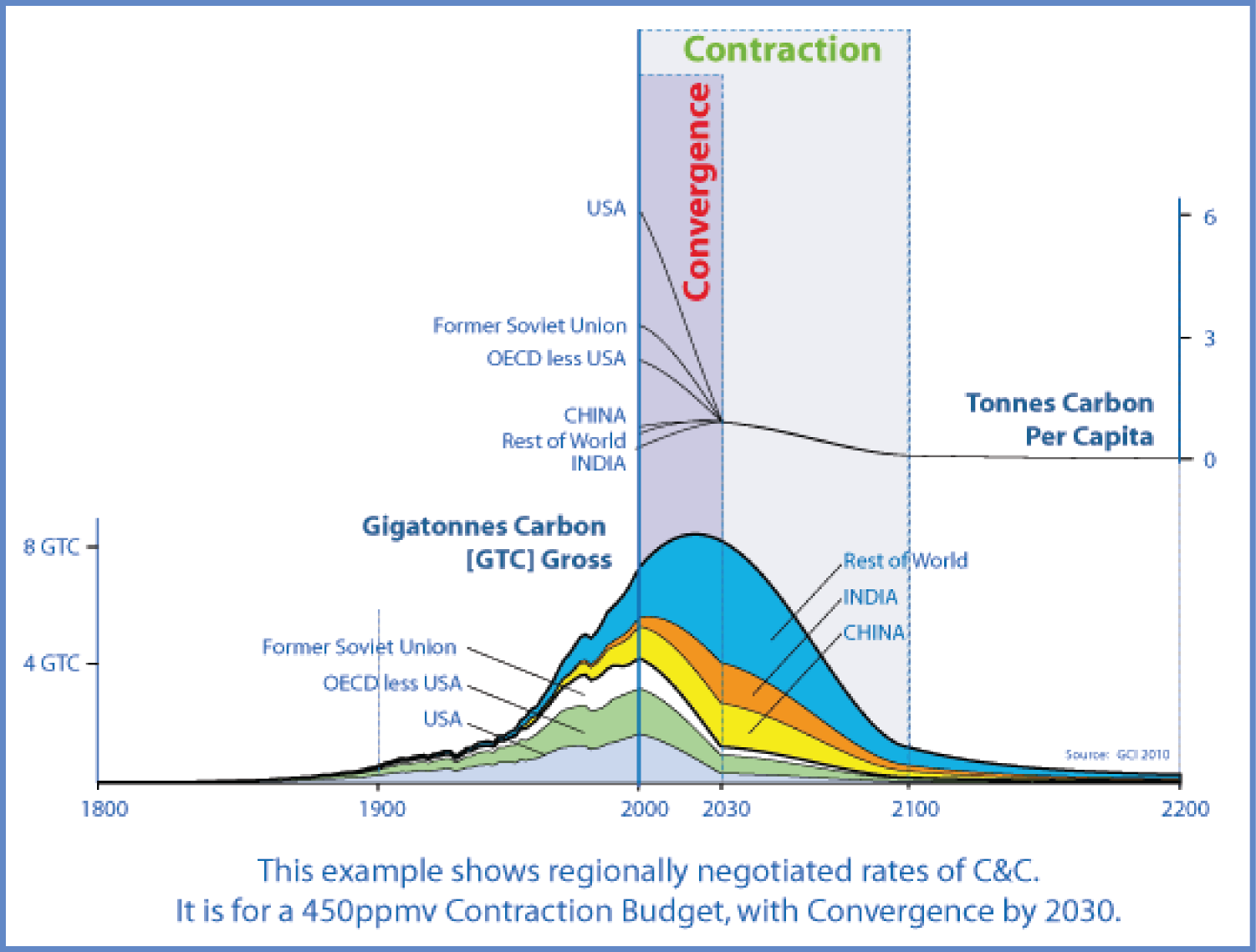
Calculating future emissions contraction, looking at concentrations and sink performance, is a non-random way of responding to the objective of the UNFCCC. Convergence refers to the full international sharing of the emissions contraction-event, where the 'emissions-entitlements' for all countries result from them converging on the declining global per capita average of emissions arising under the contraction rate chosen. Converging at a rate to be agreed - the example shows 2030 - is a non-random way of responding to the principle of 'equity' in the UNFCCC, whilst still meeting its objective. Negotiating the rate of convergence is 'the main equity lever'. Contraction and Convergence - "C&C has the virtue of simplicity. Equal per capita emissions is a natural focal point. Contestable computations based on economic variables do not need to enter the allocation formula." Professor Ross Garnaut.
17 July 2013 - "C&C - the concept is very simple." Dickson to Durban; Student Research on COP-17
Dickinson to Durban » Climate Change, Key COP17 Issues » This won’t be easy, folks.
This won’t be easy, folks.
September 14th, 2011 | 7 Comments
Chapter 5 of A Climate of Injustice by J. Timmons Roberts and Bradley Parks illustrates a set of approaches for allocating greenhouse gas targets. One of the four approaches stood out to me. The strategy in question was proposed by India, China and the Group of 77 and has been endorsed by France, Switzerland and the European Union; it is called the “Per-capita” strategy by Roberts and Parks. This approach is embodied in the emissions management model called “Contraction and Convergence” developed by the Global Commons Institute and it was introduced by the Indian government in 1995.
The concept is very simple. First, a maximum acceptable atmospheric CO2 concentration is calculated. Then, it is divided by the number of the people in the world. So each person has an allocated amount of emissions, so each country is responsible to stay below the allocated amount of their entire population. Seems fair, right? I thought so. It made perfect sense to me, each person gets an equal share of the pie and no one can complain.
However, some nations don’t see it as reasonable as I do, especially the rich countries… namely the US. See, the US views this as an attack. If the world’s pollution limits were divvied out evenly they would have to decrease their output significantly. Other countries, mainly those pushing for this, can stand to benefit from this because their people have a ways to go to reach that limit, meaning they would be able to actually increase their CO2 output.
Personally, I think this seems fair. For one, the US and other developed countries have been responsible for a lot of the climate change problem, even if they weren’t aware of it. For another, the US doesn’t really have a right to tell developing countries that they are not allowed to follow in our footsteps to a better life, that’s just rude.
But then I started wondering what the implications of the C&C model would be for me personally. I started wondering exactly what it would mean to live at this threshold of “one metric ton of carbon equivalent per capita” that Roberts and Parks say is necessary. If the average American really dumps nine times as much C02 into the air as the average Chinese and ninety times as much as the average Bangladeshian then how much would we have to decrease our consumption to reach an average level for the entire planet?
So I checked out the Nature Conservancy CO2 calculator to see if I could calculate a rough estimate of my current share of this “per capita” output. The results I found were very unsettling. (First I did some conversions and found that 1 metric ton is equal to 1.1 US tons, which is the unit the Nature Conservancy used).
My per capita emissions (based on the fact that I have a 5 person family in one normal house) are roughly around 13 US tons which is actually 52% that of the average American, a whopping 27 US tons. The world average? 5.5 tons. So this means that the entire world has to reduce their CO2 output to 1/5 what it currently is, and I have to somehow decrease it to 1/13. Puts things into perspective, right?
So I tried again to see if I could manipulate the calculator to form a situation where I was below 1.1 US tons. I put my 5 person family in a huge apartment with only 3 bedrooms. I heated and cooled and lit my house efficiently wherever possible, used all ENERGY STAR appliances, used no hot water, drove no vehicle, went vegetarian on all organic food, composted everything and recycled everything else. My results? Still 3 US tons! There was no possible way to get the calculator below 1.1 US tons.
This puzzle made the depth of our situation clear to me. This won’t be easy. In order to reduce emissions to the stability level that Roberts and Parks want we would all have to rid ourselves of pretty much every comfort that we take for granted. We need to be prepared to give up a lot, because even improved technology isn’t going to be the solution (though it could definitely improve the situation). We need to radically rethink the structure of our societies and what we truly believe is important to us. If the Nature Conservancy is right, and I can’t live under one metric ton of CO2 doing every little thing I can, then Michael Maniates is right, and we need to start thinking big.
Works Cited:
1. Roberts & Parks, 2007. “Fueling Injustice: Emissions, Development Paths, and Responsibility.” In Roberts & Parks, A Climate of Injustice, MIT Press, Cambridge, MA, pp. 133-184.
2. Nature Conservancy “Free Carbon Footprint Calculator,”
http://www.nature.org/greenliving/carboncalculator/index.htm3. “Contraction and Convergence.” http://www.gci.org.uk/index.html
17 July 2013 - "Is the next frontier C&C?" Livestock Research for Africa's Food Security & Poverty Reduction ILRI &FARA17 July 2013 - "Capital District commitment to a multilateral C&C agreement " Envisioning the Permavegan Conceptual Framework
My Updated Horizons of Focus
July 16, 2013 by Jonathan W. Maxson
Before digging any deeper into my website, please take a few minutes to get acquainted with the Horizons of Focus that guide my work.My operating assumption is that we are currently passing (circa 1972-2080 CE) through a challenging developmental period in the gene-culture coevolution of a eusocial interspecies superorganism.
I blog as the “Permavegan” to underscore my faith that mass diffusion of a vegan behavioral approach to permaculture, sustainable urbanism and United Nations federation is at the core of our successful biocultural adaptation to the population bottleneck, climate crisis, and international resource conflicts of the 21st century.
Within this conceptual framework, I approach sustainable development through a catalytic regional focus on the 20 million world citizens of New York State.
1. Mission (50,000 feet)
It is my life mission to assist with the equitable and developmental contraction of New York’s ecological footprint until the state reaches optimum human development within planetary carrying capacity under the federal jurisdiction of a reformed United Nations.
This mission necessarily includes interfaith Christian coping with the realities of indigenous genocide, multigenerational trauma, ecological overshoot, and regional collapse of the hydrocarbon economy.
2. Vision (40,000 feet)
I believe in praying for the best while preparing for future hardship through systematic disaster risk reduction. Given the probability that severe ecological and economic stress will intensify between 2013 and 2020, my regional vision for 2020 consists of six planks in a radical new Albany Plan of Union for integrated local-to-global leadership:
- Capital District commitment to emergency reduction of atmospheric methane to reach a “Kyoto II” confidence-building target of at least 1600 ppbv that slows the pace of catastrophic Arctic system overheating;
- Capital District commitment to emergency vegan ecological transition of the New York food system (including aerobic composting of all biological waste) to reduce methane emissions and promote deep resilience across the energy, food, forest, and healthcare sectors;
- Capital District commitment to a multilateral agreement for the timely and equitable Contraction and Convergence of fossil fuel emissions through sustainable urban redevelopment;
- Capital District commitment to ratification of the Rome Statute of the International Criminal Court and compulsory jurisdiction under the International Court of Justice;
- Capital District commitment to the orderly secession of New York, New England, and regional tribal confederacies to form three independent states in a federal United Nations;
- Capital District commitment to reform the monetary system, banking system, and stock exchange of an independent New York in order to stabilize regional and global investments in humanitarian disaster risk reduction and collapse adaptation.
3. Goals (30,000 feet)
Between now and the end of 2015, I am working toward about ten goals that relate to
- My enrollment in a PhD program that supports my research on integrated sustainable development at the Capital District, New York and UN levels;
- The radical simplification of my ecological footprint through forward-thinking collaboration with religious, vocational and political colleagues in the City of Albany.
4. Sphere of Responsibility (20,000 feet)
I balance my daily, weekly and monthly commitments around a seven-point Sphere of Responsibility:
This Sphere of Responsibility associates the six elementary Hering colors of the Natural Color System with the cardinal directions, the classical elements, and my personal roles as follows:
- Black (Nadir) = Interfaith “Roots” [Sustainable Church]
- White (Zenith) = Political “Crown” [UN State]
- Green (East, Earth) = Vegan Home Economy [Simple Living]
- Yellow (South, Air) = Sustainable Urbanism [Permavegan Design]
- Red (West, Fire) = Personal Health [Plant-Based Fitness]
- Blue (North, Water) = Family Partnership [Eusocial Relationship]
- Dynamic Void (Center, Akasha) = Ethical Leadership [Getting Things Done]
The roots (1), crown (2), and central trunk (7) of this model are consistent with my understanding of interfaith world tree cosmology, including the Tree of Enlightenment in Buddhist traditions, the Tree of Life in Abrahamic traditions, and the Tree of Peace in Haudenosaunee shamanism.
5. Projects (10,000 feet)
I pursue a range of projects within each of my seven areas of responsibility on a quarterly basis.
6. Next Actions and Appointments (Runway)
I manage my next actions and my calendar with a simple paper planner.
I keep bicultural time with a Gregorian civil calendar (Coordinated Universal Time) and a medicine wheel that I am adapting for use in the Capital District of New York:
This medicine wheel is a synthesis of Asian, Mesopotamian, Native American, North African and Northern European cosmologies. It unifies all components of my Horizons of Focus into a sacred place-making whole.
Related Previous Entries
- 1 Crocodile Year Zero and Animal Powers in the Albany Permavegan Medicine Wheel (2013-04-01)
- Updated Color Symbolism for the Albany Permavegan Medicine Wheel (2013-03-30)
- Our New Horizons of Focus (2013-03-19)
- The Six Color Directions of a Permavegan Medicine Wheel (2013-03-11)
- Medicine Wheel: Beyond the Tradition (2013-03-10)
This entry was last updated on July 16, 2013.
15 July 2013 - Well-Tempered 5th is Golden Section, the source of the ultimate fractal, between Perfect 5th & Diminished 5th.The Meeting of
- the PERFECT FIFTH [8/12 or 0.666]
- the DIMINISHED FIFTH [7/12 or 0.583] &
- the WELL-TEMPERED FIFTH [7.416407865/12 or 0.618]
The Perfect 5th is at the GOLDEN SECTION [GS], the ‘irrational fraction’ 0.618033988749895 . . .
GS is at the heart of the CBAT calculation methodology [here]
14 July 2013 - "A sophisticated model, C&C foregrounds equity." Faith in the Public Square Dr Rowan Williams
Faith in the Public Square [Can you hear the harmonics? See below].
Rowan Williams
"One of the features of addictive behaviour is, classically, denial; we should perhaps not be surprised to find the divided mind I spoke of a moment a go in so much of our economic forecasting. But we learn to face and overcome denial partly by new relationships or new security about relationships enabling us to confront unwelcome truths without the fear of being destroyed by them.This is why myths matter, and why multiplying statistics doesn't of itself change things. That the world is the vehicle of 'intimate and dynamic relation' with the active and intelligent source of all life is some sort of spur to face our sins and absurdities in dealing with it. But we need to bear in mind also that we are talking not just about the respectful conservation of an environment for its own sake. Concrete material processes have, so to speak, caught up with the myth, and we should be able to see that offences against our environment are literally not sustainable.
The argument about ecology has advanced from concerns about 'conservation': what we now have to confront is that it is also our own 'conservation', our viability as a species, which is finally at stake. And what is more, in the shorter term, what is at stake is our continuance as a species capable of some vision of universal justice. Not the least horror of our present circumstances is the prospect of a world of spiralling inequality and a culture that has learned again to assume what Christianity has struggled to persuade humanity against since its beginning - that most human beings are essentially dispensable, born to die, in Saul Bellow's harsh phrase. I needn't elaborate on how this makes absolute nonsense of any claim to be committed to a gift-based view of the world and of our individual and social relations. There is in the long run no choice between this spiralling inequality (and the fortress societies it will create) and some realistic step to deal with our addictions.
The Global Commons Institute, based in London, has in recent years been advancing a very sophisticated model for pushing us back towards some serious engagement with this matter of equality, through its proposed programme of 'Contraction and Convergence'. This seeks to achieve fairly rapid and substantial reductions in greenhouse gas emissions - but to do so in a way that foregrounds questions of equity between rich and poor nations. At the moment, rates of emission are fantastically uneven across the globe. In the first 48 hours of 2004, an average American family would have been responsible for as much in the way of emissions as an average Tanzanian family over the entire year. So what is proposed is that each nation is treated as having the same limited 'entitlement to pollute' - an agreed level of carbon emission, compatible with goals for reducing and stabilizing overall atmospheric pollution.
Since, obviously, heavily industrialized, high-consumption nations will habitually be using a great deal more than their entitlement and poorer nations less, there should be a pro rata charge on the higher users. They would, as it were, be purchasing the pollution 'credits' of less prosperous countries. And this charge would be put at the service of sustainable development in poorer nations in accord with the Millennium Development Goals. This would be treated not as an aid issue, but as a matter of trading and entitlement. The hoped-for effect in the medium term would be convergence: that is, a situation in which every citizen of the globe would be steadily approaching the same level of responsibility for environmental pollution. Because such a programme would necessarily challenge over-average users to reduce (otherwise an intolerable tax burden would be imposed), we could look for a reduction in the addictive levels of dependence in wealthier countries and a stimulus to develop renewable energy sources. We should also achieve a dependable source of development income, neither loan nor aid, for the countries suffering most intensely from the existing inequities.
This kind of thinking appears utopian only if we refuse to contemplate the alternatives honestly. Climate change has rightly been described by Sir David King, Chief Scientific Adviser to the Government, as a 'weapon of mass destruction', words echoed by Hans Blix, the former UN weapons inspector. In the current atmosphereof intense anxiety about terrorism, 'rogue states' and long-term political instability, we absolutely cannot afford to neglect what is probably the most deep-rooted source of further and potentially uncontrollable instability in the foreseeable future."
Rowan Williams, the finest theologian in Britain, offers in these essays the most penetrating analysis of the moral, cultural and economic crisis of our times, and of the role of faith in the public arena. It should be read by politicians, economists and artists, and by anyone who cares for the future of our society and planet.
Timothy Radcliffe OP
Wonderful David Hare Interview with ABC Rowan Williams in the Guardian Magazine 8th July, 2011
I ask if that's the criterion 'that the world should make sense'. "Make sense not in a great theoretical system, but that you can see the connections somehow and 'I tend to reach for musical analogies here' you can hear the harmonics. You may not have everything tied up in every detail, but there's enough of that harmonic available to think, 'OK, I can risk aligning myself with this.' Because you're never going to nail it to the floor and eat your heart out, Richard Dawkins!
"You know that scene in the Woody Allen film where they have an argument in a cinema queue, and Marshall McLuhan is standing behind them and able to interrupt to settle the argument? Woody Allen turns to the camera and says, 'Wouldn't it be wonderful if life were like that?' Well, no Marshall McLuhan will ever step forward in the queue and say to Richard Dawkins, 'The archbishop's right.' It's not going to happen."
ABC is on record with accomplished C&C advocacy in the CoE dcoument 'Sharing God's Planet' and on page 66 of the DAVOS document Faith and the Global Agenda: Values for the Post-Crisis Economy - and Richard Dawkins will yet make his peace with Plato.
14 July 2013 - "C&C - equilibrium in global emissions." London After Recession Pointer McRury Calcutt
The system of 'contraction and convergence' [C&C] first envisaged by the Global Commons Institute (GCI: 1990), a London-based enterprise. According to C&C, if emissions are lessened in the largest polluting countries, while emissions allowances are increased for developing countries, this will create equilibrium in global emissions. Meanwhile, in the (then) bear pit of British politics, the convergence between environmental concerns and economic self-interest, was already receiving support from an unlikely source - Prime Minister Margaret Thatcher.
London After Recession
Pointer McRury Calcutt
14 July 2013 - "Why are we the good guys?" Veteran scholar-activist & co-founder of Medialens, D Cromwell
Why Are We the Good Guys?
David Cromwell - MediaLensThis book continues to bring corporate and vested interests to the court of public opinion. The publisher of this work - Zero Books - describes it as, "a provocative challenge to the standard ideology that Western power is a benevolent force in the world" and David Cromwell's prosecution of the case against entrenched interests is certainly forensic, eclectic and relentless. The truths in this book are the kind that - as they say - help free you to, "reclaim your mind from the delusions of propaganda."
David is a founder member of Medialens [set up in 2001] a now a veteran scholar-activist and widely respected author.
~~~~~~~~~~~~~~~~~~~~~~
'Karl Hood of Grenada, chair of the Alliance of Small Island States, an intergovernmental organisation of low-lying coastal and small island countries, responded to the Durban deal with damning words: "Must we accept our annihilation?"
Aubrey Meyer, a valiant climate activist and originator of the 'contraction and convergence' policy that would, if adopted by the UN, equitably reduce greenhouse gases to safe levels, was also scathing: “The islands are being annihilated and we all are now become their assassins. We have informally known this but with this "Durban-Deal" [COP-17 2011] we all have now formally crossed that threshold.”
Hello Aubrey,
Apologies for not making sure my name was on your list, but yes please do add me.
All the best
David
David Cromwell
Media Lens

We accept the Buddhist contention that while greed, hatred and ignorance distort reason; compassion empowers it. Our aim is to increase rational awareness, critical thought and compassion.Our goal is not at all to attack, insult or anger individual journalists, but to highlight significant examples of systemic media distortion that are the cause of immense suffering. For example: the failure to communicate the true death toll of the war in Iraq; the hypocrisy and destructiveness of media reporting on climate change; the failure to expose the real consequences of corporate psychopathology for modern society, sanity and culture.
Our hope is that by so doing we can challenge harmful delusions. In the age of global warming and globalised exploitation these delusions threaten an extraordinary, and perhaps terminal, disaster. We hope that this website will help to turn bystanders into compassionate actors. As historian Howard Zinn wrote:
"Society has varying and conflicting interests; what is called objectivity is the disguise of one of these interests - that of neutrality. But neutrality is a fiction in an unneutral world. There are victims, there are executioners, and there are bystanders... and the 'objectivity' of the bystander calls for inaction while other heads fall."
"We assume that the UK progressively reduces its carbon footprint so that it uses only its fair share of total global carbon emissions under the given, interim target, making sure that other countries, particularly developing countries, have space to develop and make their own transition to a sustainable future. We assume a global ‘deal’ based on ‘contraction and convergence’ to limit, reduce and maintain total global emissions within defined limits (the contraction); we also assume that the UK’s total share of emissions progressively comes into line with its fair global share (the ‘convergence’), with significant transfer payments to developing countries during the process to facilitate their sustainable development. [In 1997] "Robin Cook's initiative, which was jointly agreed with John Prescott's Department of the Environment, represented one possible way to get the developing world and, by implication, the US, on board the climate train. However, it is not the only way or, for that matter, the sustainable way. Environmentalist Aubrey Meyer believes that he has a more comprehensive 'world-saving idea' that could really cut the Gordian knot of international climate negotiations. Under the auspices of the Global Commons Institute, the London-based lobbying group he helped to set up with friends from the Green Party in 1990, Meyer has been promoting a simple and powerful concept which has already had a major impact on senior politicians and negotiators. GCI's eye-catching computer graphics illustrate past emissions and future allocation of emissions by country, achieving per capita equality by 2030, for example. After this date, emissions drop off to reach safe levels by 2100. This so-called 'contraction and convergence' in emissions has gathered the support of a majority of the world's countries, including China and India. It may be the only approach that developing countries are willing to accept."
Private Planet
David Cromwell
"Climate change is a pressing reality. From hurricane Katrina to melting polar ice, and from mass extinctions to increased threats to food and water security, the link between corporate globalization and planetary blowback is becoming all too evident. Governments and business keep reassuring the public they are going to fix the problem. An epochal change is called for in the way we all engage with the climate crisis. Key to that change is Aubrey Meyer's proposed "Contraction and Convergence" framework for limiting global carbon emissions, which he outlines in this book."
"Surviving Climate Change"
Editors Mark Levene & David Cromwell
Southampton University Crisis ForumGame Over For The Climate?
Whatever happened to the green movement? It’s been 50 years since the publication of Rachel Carson’s classic Silent Spring, a powerful book about the environmental devastation wreaked by chemical pesticides. Since then we’ve had the rise and fall - or at least the compromised assimilation - of green groups such as Friends of the Earth, Greenpeace and Forum For the Future.
Last week, the Independent marked the half-century with a well-meaning but frankly insipid ‘landmark series’ titled ‘The Green Movement at 50’. But there’s a glaring hole in such coverage; and, indeed, in the ‘green movement’ itself: the insidious role of the corporate media, a key component of corporate globalisation, in driving humanity and ecosystems towards the brink of destruction.
The acclaimed biologist and conservationist Edward O. Wilson puts the scale of the crisis bluntly:
‘We’re destroying the rest of life in one century. We’ll be down to half the species of plants and animals by the end of the century if we keep at this rate.’
And yet ‘very few people are paying attention’ to this disaster. Wilson, who is 82, directed his warning to the young in particular:
‘Why aren’t you young people out protesting the mess that’s being made of the planet? Why are you not repeating what was done in the ‘60s? Why aren’t you in the streets? And what in the world has happened to the green movement that used to be on our minds and accompanied by outrage and high hopes? What went wrong?’
The trouble is that most of what the public hears about politics, including environmental issues, comes from the corporate media. This is a disaster for genuine democracy. As discussed in a recent alert, the media industry is made up of large profit-seeking corporations whose main task is to sell audiences to wealthy advertisers – also corporations, of course - on whom the media depend for a huge slice of their revenues. It’s blindingly obvious that the corporate media is literally not in the business of alerting humanity to the real risk of climate catastrophe and what needs to be done to avert it.
Last month, leading climate scientist James Hansen, who was the first to warn the US Congress about global warming in 1988, observed that:
‘President Obama speaks of a “planet in peril,” but he does not provide the leadership needed to change the world’s course.’
Hansen added:
‘The science of the situation is clear — it’s time for the politics to follow. [...] Every major national science academy in the world has reported that global warming is real, caused mostly by humans, and requires urgent action. The cost of acting goes far higher the longer we wait — we can’t wait any longer to avoid the worst and be judged immoral by coming generations.’
If adequate action doesn’t happen soon, says Hansen, it’s ‘game over for the climate’.
Always Stuck On Square One
And yet even liberal media outlets repeatedly present as fact that there has been government ‘failure’ to respond to climate change. They do very little to report that big business, acting through and outside government, and the corporate media itself, has been fighting tooth and nail to prevent the required radical action.
Indeed, media debate on how best to respond to environmental crisis has barely moved in a generation. For years, the public has been assailed by the same anodyne editorials urging ‘the need for all of us to act now’. Meanwhile, for obvious reasons, corporate media organisations are silent about the inherently biocidal logic of corporate capitalism. They are silent about the reality that politics in the US and UK is largely ‘a two-party dictatorship in thraldom to giant corporations,’ as Ralph Nader has observed (interview with Paul Jay, The Real News Network, November 4, 2008). They are silent about the role of the mass media, especially advertising, in normalising the unthinkable of unrestrained consumption. The corporate media, including its liberal media wing, is a vital cog of the rampant global capitalism that threatens our very existence.
But – and here some of our readers start to protest or scratch their heads - surely the Guardian is immune to such political and commercial pressures? After all, it is owned by the non-profit Scott Trust, as the paper’s editors and journalists are fond of reminding their audience. But delve a little deeper and you will see that the newspaper is managed and operated by influential bigwigs with extensive ties to the establishment, ‘mainstream’ political parties, finance and big business (as we discussed at greater length in our book, Newspeak in the 21st Century, Pluto Press, London, 2009).
The truth is the Guardian is just as grubbily commercial as other corporate media organisations. In fact, a media insider revealed to us recently that the Guardian has a confidential business plan to address its current massive loss-making (a common affliction in today’s newspaper industry with the increasing leakage of advertising from papers to the internet). He told us that when a media website is ranked in the top 10 in the United States, the floodgates of online advertising open and its coffers start to fill. The online Guardian has therefore been marketing itself to US audiences as heavily as it can. Its stringently-moderated Comment is Free website is one of the crucial elements of that strategy. The Guardian is now at the threshold of accessing lucrative sums in advertising revenue.
With humanity heading for the climate abyss, it’s time for the green movement and those on the left to wake up to the reality that the Guardian, and the rest of the liberal-corporate media, is not in favour of the kind of radical change that is desperately needed.
The Sound Of A Door Closing Forever
Despite an endless series of escalating alarms from Mother Nature indicating the urgency of the climate crisis, no serious action is being undertaken to avert catastrophe. Whenever the corporate media bothers to report the latest sign of climate threat, it usually does so in passing and without proper analysis of the likely consequences, and what can and should be done. And then the issue is simply dropped and forgotten.
For example, the head of the International Energy Agency recently warned that the chance of limiting the rise in global temperatures this century to 2 degrees Celsius (2°C) above pre-industrial levels is reducing rapidly.
‘What I see now with existing investments for [power] plants under construction...we are seeing the door for a 2 degree Celsius target about to be closed and closed forever,’ Fatih Birol, the IEA's chief economist, told a Reuters’ Global Energy & Environment Summit.
‘This door is getting slimmer and slimmer in terms of physical and economic possibility,’ he warned.
According to the IEA, around 80 per cent of the total energy-related carbon emissions permissible by 2035 to limit warming to 2°C have already been taken up by existing power plants, buildings and factories.
The 2°C limit was agreed in 2010 at the UN climate summit in Cancún, Mexico. Why 2°C? The Reuters report explains:
‘Scientists say that crossing the threshold risks an unstable climate in which weather extremes are common...’
Tragically, the current trend in greenhouse gas emissions means that rising carbon dioxide emissions may well produce a 2°C rise as early as 2050 and a 2.8°C rise by 2080.
If there is ever any ‘mainstream’ discussion of ‘climate risk’, it is usually couched in terms of this ‘safe limit’ of 2°C warming. This was a major theme of the most recent UN climate summit in Durban in December 2011. For example, Louise Gray, environment correspondent of the Daily Telegraph, wrote that:
‘UN scientists have stated that emissions need to peak and start coming down before 2020 to stand a chance of keeping temperature rise within the “safe zone” of 2C.’
Lord Julian Hunt, former head of the UK Met Office, pointed out the best current estimate for global temperature rise by 2100 is 3.5°C and said that the ‘international consensus’ is that it ‘should be limited to 2C’.
A Guardian editorial declared:
‘The race to keep the rise in global temperatures below 2C is still winnable if there is a big change in the pace,’ although conceding that ‘a 3-4C rise looks the most likely outcome.’
Few voices disagree with this framing of the climate debate and what the ‘safe’ target should be. But Chris Shaw, a social sciences researcher at the University of Sussex, is one exception. Shaw has been investigating how international climate change policy is being driven by the ideological notion of a single global dangerous limit of 2°C warming. In reality, however, such a precise limit cannot be supported by the complexities of climate science. For example, low-lying coastal regions such as Bangladesh and Pacific islands are clearly more vulnerable to likely sea-level rises than elevated inland regions. Also, 2°C warming would be more harmful to some ecosystems than others; coral reefs may bleach out of existence once the oceans warm by as little as 1°C. Additionally, because of geographical variation in the effects of climate change, 2°C global average warming means that some parts of the world would actually experience as much as 4°C-5°C warming.
Shaw’s analysis shows how the ‘two degree dangerous limit’ framework of debate and policy-making has constructed climate change ‘as a problem solvable within existing value systems and patterns of social activity.’ In other words, corporate globalisation is not up for challenge. He stresses that even if we had a perfect forecast of future climate change and our vulnerability to it, 'deciding what counts as dangerous is still a value choice because what is considered to be an acceptable risk will vary between individuals and cultures.' The 2°C-limit ideology ‘elevates the idea of a single dangerous limit to the status of fact, and in so doing marginalises egalitarian and ecological perspectives’.
This propaganda process of marginalising sane alternatives has been no accident. As Shaw rightly observes:
'Since the Second World War, the prevailing consensus has been that all problems can be solved through the expert application of industrial technologies, rather than real changes in how we live our lives or, more fundamentally, in human consciousness. The two degree limit perpetuates this approach by diverting attention away from questions about the political and social order.'
Shaw concludes:
'What should be a political debate about how we want to live becomes reduced to a series of expert calculations about "how much CO2 can we continue emitting before we warm the world by two degrees?" or "what will be the effect on GDP of reducing emissions by 20 per cent?" Consequently, we are invited to see the world as a kind of planetary machine that requires engineering management and maintenance by experts.' (Email, June 18, 2012)
Climate activist and independent journalist Cory Morningstar observes that the first suggestion to use 2°C as a critical temperature limit for climate policy was not even made by a climate scientist. Rather it was put forward by the well-known neoclassical economist, W. D. Nordhaus:
‘Nordhaus has been one of the most influential economists involved in climate change models and construction of emissions scenarios for well over 30 years, having developed one of the earliest economic models to evaluate climate change policy. He has steadfastly opposed the drastic reductions in greenhouse gases emissions necessary for averting global catastrophe, “arguing instead for a slow process of emissions reduction, on the grounds that it would be more economically justifiable.”’
Morningstar, initiator of the grassroots group Canadians for Action on Climate Change, has carefully traced the cynical machinations of corporate ‘environmentalism’. She highlights the little-known fact that, rather than a 2°C target, the original ‘safe limit’ was given as just 1ºC by the United Nations Advisory Group on Greenhouse Gases in 1990. But an unholy alliance of corporate interests resulted in it being buried and replaced by the higher target.
She adds:
‘As a consequence of such interference by many powerful players who sought to ensure the economic and political power structure would not be threatened, adaptation surfaced as the primary goal in international climate science and policy, effectively replacing the goals of prevention and mitigation from the 1980s.’
Morningstar warns of making false friends in the struggle to avert the climate chaos ahead:
‘The mainstream environmental movement no longer inspires nor leads society to an enlightened existence – it simply bows down to the status quo.’
Too many of these mainstream groups have, she says, essentially ‘teamed up’ with the very same corporations that need to be challenged; the same corporations who:
‘greenwash summits and caused such social injustice and environmental degradation in the first place and continue to lobby and bully to maintain the status quo of corporate dominance today.’
Chris Shaw points out that powerful policy actors, notably the European Union, have imposed the simple metric of the two degree limit which ‘is then parroted uncritically by the media and NGOs. The danger is that the concept communicates a fallacious sense of certainty.’ (Email, May 24, 2012)
He sums up:
‘The argument reduces to this - defining what counts as dangerous is a value choice, not an expert calculation. The neoliberal globalization agenda cannot accommodate almost seven billion different opinions [i.e. the global population] about how much warming should be risked in the name of continued economic growth.’
And so the ideology that best fits within the neoliberal agenda of corporate globalisation – in other words, a single warming limit - is the framework that prevails. Shaw says that 'a new way of talking and thinking about climate change is long overdue' and intends to set out options for this at his blog.
Contraction And Convergence
In a rare exception in the corporate media, an article by the Independent’s science editor Steve Connor at least allowed James Hansen a few short paragraphs to spell out the dangers of the 2ºC threshold - if not the economic-growth ideology that lies behind it - and what is really required instead:
‘The target of 2C... is a prescription for long-term disaster ...we are beginning to see signs of slow [climate] feedbacks beginning to come into play. Ice sheets are beginning to lose mass and methane hydrates are to some degree beginning to bubble out of melting permafrost.’
Along with other scientists and climate campaigners, Hansen believes the focus should be on limiting the concentration of carbon dioxide in the atmosphere – now at around 390 parts per million (ppm) and rising annually by 2 ppm. Hansen says it should be no higher than 350 ppm to stop catastrophic events such as the melting of ice sheets, dangerous sea level rises and the huge release of methane from beneath the permafrost. This will require drastic cuts in greenhouse gas emissions and even ‘biosequestration’, for example through reforestation, to soak up some of the carbon dioxide already in the atmosphere.
But even 350 ppm may well be too high, as Hansen himself acknowledges. There may need to be an upper limit of 300 ppm. Professor Hans Joachim Schellnhuber, head of the prestigious Potsdam Institute for Climate Impact Research, goes further stating:
‘Our survival would very much depend on how well we were able to draw down carbon dioxide to 280 ppm.’
This would mean giving up fossil fuels completely; a move which would be fiercely and relentlessly opposed by vested interests.
So, if not the current UN process with its 2°C ‘safe limit’, what should be the framework for averting climate catastrophe? For many years now, we have advocated the climate policy known as ‘contraction and convergence’ proposed by the London-based Global Climate Institute led by the indefatigable Aubrey Meyer. By agreeing to a level of, say, 280 ppm, both ‘developed’ and ‘developing’ nations would contract (i.e. reduce) their production of global-warming gases. This would be done by converging to an equitable per-capita basis of shared emission rights: more populous nations would be allowed to emit proportionally more than smaller nations.
Now that the Kyoto Protocol – the previous climate treaty - has expired in 2012, the United Nations is currently considering the best way forward for its climate negotiations. The GCI’s proposal of contraction and convergence is gathering a good head of steam. For the sake of planetary health – indeed humanity’s survival – it should be accepted and implemented.
The Megalomaniacal Megamachine
The mainstream environment movement, with its career campaigners and high-level hobnobbing with power, has largely failed the public. Tony Juniper, former director of Friends of the Earth (FoE), speaks grandly of the ‘two parallel discourses’ of planetary boundaries and economic growth ‘going in polar opposite directions’. That is all too obvious, and has been well-known for decades. He then claims that ‘the profoundest failure of all is our underlying disconnect from the Earth.’
Juniper explains:
‘We work to take on these environmental challenges without having any kind of profound connection with nature. We've lost it talking in a mechanistic, policy-oriented way.
‘We've tried to make it all about numbers, parts per million, complicated policy instruments, and as a result, we've lost something that's essential. Most people couldn't tell you the names of country flowers by the side of the road, the birds that are singing. It's a disconnect in our world view – a failure in our philosophy.’
Being able to name flowers by the side of the road is all good and well. But what about the deep structural causes in economics and politics that generate destruction and stifle change? In the late 1990s, one of us asked Juniper what he thought about the problem of the mainstream media acting as a propaganda system for corporate power. It was clear he had no idea what we were talking about.
Do leading environmentalists really have nothing more astute, inspiring and hard-hitting to say about a global industrial system of destructive capitalism which is consuming the planet? As one of the characters in Edward Abbey’s The Monkey Wrench Gang observes in the battle against the corporate assault on nature:
‘We're not dealing with human beings. We're up against the megamachine. A megalomaniacal megamachine.’
Feeling ‘a profound connection with nature’ is vital for one’s well-being. But it will not get us very far if we do not also recognise and then dismantle the destructive financial practices of global ‘investors’, institutions of state-corporate power - with the media a key element - and the warmongering 'adventures' that are crushing people and planet.
In the week of the Rio 2012 Earth summit, 20 years on from the original jamboree in 1992, George Monbiot writes in the Guardian:
‘So this is the great question of our age: where is everyone? The monster social movements of the 19th century and first 80 years of the 20th have gone, and nothing has replaced them. Those of us who still contest unwarranted power find our footsteps echoing through cavernous halls once thronged by multitudes. When a few hundred people do make a stand – as the Occupy campers have done – the rest of the nation just waits for them to achieve the kind of change that requires the sustained work of millions.
‘Without mass movements, without the kind of confrontation required to revitalise democracy, everything of value is deleted from the political text. But we do not mobilise, perhaps because we are endlessly seduced by hope. Hope is the rope from which we all hang.’
Stirring words.
But Jonathan Cook, an independent journalist who used to work for the Guardian, notes sagely that:
‘There are no mass protest movements today because “we are endlessly seduced by hope". And who, I wonder, does most to promote such hope? How unfortunate that he ran out of space when he did - otherwise he might have been able to answer that very question for us.’ (Email, June 18, 2012)
In other words, Guardian columnist Monbiot misses out the crucial role of the corporate media, not least his own newspaper, in endlessly seducing us all by hope.
Cook adds:
'I was a little surprised by this level of chutzpah from Monbiot. In truth, who or what does he think could be capable of generating such hope and be so practised in the art of seduction? It's clearly not the politicians: they were around decades ago, when there were serious protest movements. But a wall-to-wall "professional" (ie corporate) media is of much more recent origin. In fact, the rise of such media appears to track very closely the increase in our soma-induced state.'
For years, the corporate media has selected and promoted high-profile green spokespeople - like the Green Party's Jonathan Porritt and Sara Parkin, Greenpeace's Lord Peter Melchett and Stephen Tindale, FoE's Charles Secrett and Tony Juniper, author Mark Lynas and Monbiot himself - who have then come to limit and dominate the environment debate within ‘respectable’ bounds.
In the 1980s, big business openly declared war on the green movement which it perceived as a genuine threat to power and profit. By a process of carefully limited corporate media 'inclusion', the honesty, vitality and truth of environmentalism have been corralled, contained, trivialised and stifled. Today, even as environmental problems have lurched from bad to worse, the green movement has virtually ceased to exist. The lessons are obvious. Corporate media 'inclusion' of dissent hands influence and control to the very forces seeking to disempower dissent. No-one should be surprised by the results.
SUGGESTED ACTION
The goal of Media Lens is to promote rationality, compassion and respect for others. If you do write to journalists, we strongly urge you to maintain a polite, non-aggressive and non-abusive tone.
Please write to:
- Alan Rusbridger, Guardian editor
- Email: alan.rusbridger@guardian.co.uk
- Twitter: @arusbridger
- George Monbiot, Guardian columnist
- Email:george@monbiot.info
- Twitter: @georgemonbiot
- Chris Blackhurst, Independent editor
- Email: c.blackhurst@independent.co.uk
- Twitter: @c_blackhurst
- Michael McCarthy, Independent environment editor
- Email: m.mccarthy@independent.co.uk
March 01, 2005
IS THE EARTH REALLY FINISHED? Countering Despair With The Momentum Of Hope
"What goes against the grain of conditioning is experienced as not credible, or as a hostile act." (John McMurtry, philosopher)
Bizarre Conversations
Climate crisis is not a future risk. It is today’s reality. As Myles Allen, a climate scientist at Oxford University, warned recently: "The danger zone is not something we are going to reach in the middle of this century. We are in it now." (Roger Highfield, ‘Screen saver weather trial predicts 10 deg rise in British temperatures’, Daily Telegraph, 31 January, 2005)
Human-induced climate change has been killing people for decades. Climatologists estimate that global warming has led to the deaths of 150,000 people since 1970. (Meteorological Office, ‘Avoiding Dangerous Climate Change’, 1-3 February 2005, Table 2a. ‘Impacts on human systems due to temperature rise, precipitation change and increases in extreme events’, page 1; www.stabilisation2005.com/impacts/impacts_human.pdf) By 2050, as temperatures rise, scientists warn that three billion people will be under “water stress”, with tens of millions likely dying as a result.
At such a desperate moment in the planet’s history, we could simply throw up our hands in despair, or we could try to reduce the likelihood of the worst predictions coming true. The corporate media has yet to examine its own role in setting up huge obstacles to the latter option of hope.
Consider, for example, Michael McCarthy, environment editor of the Independent. McCarthy described how he “was taken aback” at dramatic scientific warnings of “major new threats” at a recent climate conference in Exeter. One frightening prospect is the collapse of the West Antarctic ice sheet, previously considered stable, which would lead to a 5-metre rise in global sea level. As McCarthy notes dramatically: “Goodbye London; goodbye Bangladesh”.
On the way back from Exeter on the train, he mulls over the conference findings with Paul Brown, environment correspondent of the Guardian:
“By the time we reached London we knew what the conclusion was. I said: ‘The earth is finished.’ Paul said: ‘It is, yes.’ We both shook our heads and gave that half-laugh that is sparked by incredulity. So many environmental scare stories, over the years; I never dreamed of such a one as this.
“And what will our children make of our generation, who let this planet, so lovingly created, go to waste?” (McCarthy, ‘Slouching towards disaster’, The Tablet, 12 February, 2005; available at www.gci.org.uk/articles/Tablet.pdf)
This is a remarkably bleak conclusion. McCarthy glibly notes the "inevitability of what [is] going to happen", namely: "The earth is finished." We applaud the journalist for presenting the reality of human-caused climate change. But the resignation, and the apparent lack of any resolve to avert catastrophe, is irresponsible. As Noam Chomsky has put it in a different, though related, context:
“We are faced with a kind of Pascal's wager: assume the worst and it will surely arrive: commit oneself to the struggle for freedom and justice, and its cause may be advanced.” (Chomsky, ‘Deterring Democracy’, Vintage, London, 1992, p. 64)
Following McCarthy’s anguished return to the Independent’s comfortable offices in London, one searches in vain for his penetrating news reports on how corporate greed and government complicity have dragged humanity into this abyss. One searches in vain, too, for anything similar by Paul Brown in The Guardian.
The notion of government and big business perpetrating climate crimes against humanity is simply off the news agenda. A collective madness of suffocating silence pervades the media, afflicting even those editors and journalists that we are supposed to regard as the best.
Contraction and Convergence: Climate Logic for Survival
In 1992, the United Nations Framework Convention on Climate Change was agreed. The objective of the convention is to “stabilise greenhouse gas concentrations in the atmosphere at a level that will avoid dangerous rates of climate change.” The Kyoto protocol, which came into force in February, requires developed nations to cut emissions by just 5 per cent, compared to 1990 levels. This is a tiny first step, and is far less than the cuts required, which are around 80 per cent.
One of the major gaps in the climate ‘debate’ is the deafening silence surrounding contraction and convergence (C&C). This proposal by the London-based Global Commons Institute would cut greenhouse gas emissions in a fair and timely manner, averting the worst climatic impacts. Unlike Kyoto, it is a global framework involving all countries, both ‘developed’ and ‘developing’.
C&C requires that annual emissions of greenhouse gases contract over time to a sustainable level. The aim would be to limit the equivalent concentration of carbon dioxide in the atmosphere to a safe level. The pre-industrial level, in 1800, was 280 parts per million by volume (ppmv). The current level is around 380 ppmv, and it will exceed 400 ppmv within ten years under a business as usual scenario. Even if we stopped burning fossil fuels today, the planet would continue to heat up for more than a hundred years. In other words, humanity has already committed life on the planet to considerable climate-related damages in the years to come.
Setting a ‘safe’ limit of atmospheric carbon dioxide concentration actually means estimating a limit beyond which damage to the planet is unacceptable. This may be 450 ppmv; or it may be that the international community agrees on a target lower than the present atmospheric level, say 350 ppmv. Once the target is agreed, it is a simple matter to allocate an equitable ‘carbon budget’ of annual emissions amongst the world’s population on a per capita basis. This is worked out for each country or world region (e.g. the European Union).
The Global Commons Institute’s eye-catching computer graphics illustrate past emissions and future allocation of emissions by country (or region), achieving per capita equality by 2030, for example. This is the convergence part of C&C. After 2030, emissions drop off to reach safe levels by 2100. This is the contraction. (Further information on C&C, with illustrations, can be found at www.gci.org.uk).
Recall that the objective of the UN Framework Convention on Climate Change is to “stabilise greenhouse gas concentrations in the atmosphere at a level that will avoid dangerous rates of climate change.” Its basic principles are precaution and equity. C&C is a simple and powerful proposal that directly embodies both the convention’s objective and principles.
Last year, the secretariat to the UNFCCC negotiations declared that achieving the treaty’s objective “inevitably requires Contraction and Convergence”. C&C is supported by an impressive array of authorities in climate science, including physicist Sir John Houghton, the former chair of the science assessment working group of the Intergovernmental Panel on Climate Change (1988-2002). Indeed, the IPCC, comprising the world’s recognised climate experts, has announced that: “C&C takes the rights-based approach to its logical conclusion.”
The prestigious Institute of Civil Engineers in London recently described C&C as “an antidote to the expanding, diverging and climate-changing nature of global economic development”. The ICE added that C&C “could prove to be the ultimate sustainability initiative.” (Proceedings of the Institution of Civil Engineers, London, paper 13982, December 2004)
In February 2005, Aubrey Meyer of the Global Commons Institute was given a lifetime’s achievement award by the Corporation of London. Nominations had been sought for “the person from the worlds of business, academia, politics and activism seeking the individual who had made the greatest contribution to the understanding and combating of climate change, leading strategic debate and policy formation.”
Although Meyer is at times understandably somewhat despondent at the enormity of the task ahead, he sees fruitful signs in the global grassroots push for sustainable development, something which “is impossible without personal and human development. These are things we have to work for so hope has momentum as well as motive.” (‘GCI’s Meyer looks ahead’, interview with Energy Argus, December 2004, p. 15; reprinted in www.gci.org.uk/briefings/EAC_document_3.pdf, p. 27)
And that momentum of hope is building. C&C has attracted statements of support from leading politicians and grassroots groups in a majority of the world’s countries, including the Africa Group, the Non-Aligned Movement, China and India. C&C may well be the only approach to greenhouse emissions that developing countries are willing to accept. That, in turn, should grab the attention of even the US; the Bush administration rejected the Kyoto protocol ostensibly, at least, because the agreement requires no commitments from developing nations. Kyoto involves only trivial cuts in greenhouse gas emissions, as we noted above, and the agreement will expire in 2012. A replacement agreement is needed fast.
On a sane planet, politicians and the media would now be clamouring to introduce C&C as a truly global, logical and equitable framework for stabilising the atmospheric concentration of carbon dioxide. Rational and balanced coverage of climate change would be devoting considerable resources to discussion of this groundbreaking proposal. It would be central to news reports of international climate meetings as a way out of the deadlock of negotiations; Jon Snow of Channel 4 news would be hosting hour-long live debates; the BBC’s Jeremy Paxman would demand of government ministers why they had not yet signed up to C&C; ITN’s Trevor Macdonald would present special documentaries from a multimillion pound ITN television studio; newspaper editorials would analyse the implications of C&C for sensible energy policies and tax regimes; Friends of the Earth and Greenpeace would be endlessly promoting C&C to their supporters. Instead, a horrible silence prevails.
Leaders as Moral Metaphors of a Corrupt System
We conducted a Lexis-Nexis newspaper database search to gauge the relative importance given to different topics in climate news reports by a number of major environment reporters. The following figures relate to the five year period leading up to, and including, 25 February 2005. We investigated to what extent equity, and contraction and convergence, entered into mainstream news reports on climate, in the best British press.
Michael McCarthy (Independent) Number of news reports
“climate” 232
“climate” + “industry” 80
“climate” + “Blair” 53
“climate” + “equity” 0
“climate” + “contraction and convergence” 0
Geoffrey Lean (Independent on Sunday)
“climate” 105
“climate” + “industry” 40
“climate” + “Blair” 38
“climate” + “equity” 0
“climate” + “contraction and convergence” 1
Charles Clover (Telegraph)
“climate” 136
“climate” + “industry” 47
“climate” + “Blair” 38
“climate” + “equity” 0
“climate” + “contraction and convergence” 0
Paul Brown (Guardian)
“climate” 287
“climate” + “industry” 137
“climate” + “Blair” 48
“climate” + “equity” 1
“climate” + “contraction and convergence” 1
John Vidal (Guardian)
“climate” 193
“climate” + “industry” 98
“climate” + “Blair” 31
“climate” + “equity” 1
“climate” + “contraction and convergence” 0
This is not a rigorous scientific analysis, of course, but the numbers +are+ highly indicative of hugely skewed priorities. Out of a grand total of 953 articles across the Independent, Independent on Sunday, Guardian and Telegraph, C&C was mentioned only twice, as was equity. On the other hand, industry was addressed in 402 articles, and Blair was mentioned 208 times, both almost entirely from an uncritical perspective.
One might counter that pronouncements on climate by Tony Blair, as prime minister, should be deemed automatically ‘newsworthy’. But we must also bear in mind what Blair actually represents, even if the media conceals it well. Canadian philosopher John McMurtry explains:
“Tony Blair exemplifies the character structure of the global market order. Packaged in the corporate culture of youthful image, he is constructed as sincere, energetic and moral. Like other ruling-party leaders, he has worked hard to be selected by the financial and media axes of power as ‘the man to do the job’. He is a moral metaphor of the system.” (McMurtry, ‘Value Wars’, Pluto, London, 2002, p. 22)
Although public trust in Blair has collapsed after his many deceptions over Iraq, the media continue to present him as a fundamentally well-intentioned leader pursuing the interests of the nation. Thus, whenever Blair, Bush and other corporate-backed political leaders are given prominent news coverage, the media is in effect promoting its own business goals of profit and power. This is inimical to any reasonable prospect of averting climate catastrophe.
Contraction and convergence is the only serious global framework on the table for plotting a route out of the climate crisis. That C&C, and the concept of equity, can be so systematically ignored by the corporate media, is yet another damning indictment of the media’s systemic failings. It is incumbent upon us all to push these issues onto the news agenda.
SUGGESTED ACTION
The goal of Media Lens is to promote rationality, compassion and respect for others. When writing emails to journalists, we strongly urge readers to maintain a polite, non-aggressive and non-abusive tone. You could ask questions along the following lines: In your reports on climate change, why do you never address equity, or contraction and convergence?
Write to Michael McCarthy, environment editor of the Independent:
Email: m.mccarthy@independent.co.ukWrite to Geoffrey Lean, environment editor of the Independent on Sunday:
Email: g.lean@independent.co.ukWrite to Charles Clover, environment editor of the Daily Telegraph:
Email: Charles.Clover@telegraph.co.ukWrite to Paul Brown, environment correspondent of the Guardian:
Email: paul.brown@guardian.co.ukWrite to John Vidal, environment editor of the Guardian:
Email: john.vidal@guardian.co.uk
14 July 2013 - "C&C - a more realistic way forward." Post-2020 Climate Change Regime Formation edited by Suh-Yong Chung
Available for some time is the plentiful academic literature on possible ways to move forward to build the climate change regime. While several institutions such as the World Resources Institute have attempted to survey and capture the diverse interests and views, there have been limited attempts for a similar review within institutions of the ASEAN member countries.As such there is a lack of discussions on bottom up approaches or alternatives such as the Contraction and Convergence principle, supposedly t0 provide a more realistic way forward to improve' the UNFCCC approach.
What can be observed is that some advanced ASEAN member countries have conducted assessments but of national interest and subsequently made voluntary pledges – independently of the ASEAN.
Moving forward, there has yet to be an assessment on what an individual member country does within ASEAN and what ASEAN as a regional organization is hoping to achieve. The pledges are serious national political commitments indicating a significant shift from the business·as·usual approach.
Post-2020 Climate Change Regime Formation
edited by Suh-Yong Chung14 July 2013 - "C&C 350 450 550" Climate Policy Options beyond 2012 Bert Metz, the Netherlands, Mike Hulme, Tyndall Centre
Breaking down global emission pathways into reduction targets for individual countries or regions is probably one of the more contentious challenges for climatic negotiators. It should be clear that there is no single correct answer to the question of how much the EU needs to reduce the emissions in order to meet a, say, 450 ppm concentration target. The reason for that is not only that there is some degree of freedom as to when the reductions should take place, as discussed above, but also – and perhaps more importantly - that there are several different methods that can be used to share the burden of emission reductions between countries and regions; e.g. equal per capita, contraction and convergence (Meyer, 2000), multistage, intensity targets, global triptych and multi-sector convergence (sec, e.g., den Elzen, 2002; Grassl et aI., 2003; Hohne, 2005).
Due to space limitations, it is not possible to review these results in detail. Instead, I will offer an illustration of the implications of one approach - contraction and convergence by the year 2050 with a focus on CO2 for three different concentration targets (350, 450 and 550 ppm). Results where other approaches are taken and when all the Kyoto gases are considered arc discussed later.
In Figure 3, per-capita emissions in the European Union and China over the next 50 years that would be compatible with a global effort to meet these three targets are shown. The emission pathways are developed in the following way. It is assumed that all countries receive emissions allowances for the year 2000 that represent their current emissions.
For the year 2050, allowances are allocated on a per-capita basis globally. For the years in between, a linear weighting scheme is assumed. In addition, I have assumed that the contributions from deforestation and land-use changes drop linearly from 1.5 GtC/year at present to zero by the year 2050. The global population reaches 9.1 billion by the year 2050 (UN, 2004).
For the year 2050, the required reduction in EU lies in the range 50% (for a 550 ppm target) to 90% (350 ppm). It is worthwhile to note that there is such a sharp reduction requirement for the 550 ppm target despite the fact that the global carbon emission trajectory leading to 550 ppm actually increases by 20% (see Figure 2). The reason for this is that the contraction and convergence approach requires that emission allowances should be allocated on a per-capita basis.
For the year 2050, the required reduction in the EU lies in the range 50% (for a 550 ppm target) to 90% (350 ppm). It is worthwhile to note that there is such a sharp reduction requirement for the 550 ppm target despite the fact that the global carbon emission trajectory leading to 550 ppm actually increases by 20% (see Figure 2). The reason for this is that the contraction and convergence approach requires that emission allowances should be allocated on a per-capita basis.
For the year 2020, the per-capita reduction targets for the EU, should be in the range minus 20-40% compared to the year 2000 for the 350 and 450 ppm targets, respectively. I am deliberately rounding numbers in order to avoid creating the impression that one can be very precise in establishing what needs to be done in one region in the near term in order to meet a global long-run target. It is interesting to compare these targets with those proposed by the Council of the European Union (on 10 March 2005). The EU proposed that the developed countries adopt reduction targets (for all Kyoto greenhouse gases) in the order of 15- 30% below 1990 by the year 2020 (see EU, 2005).
Other, more detailed assessments of the reduction requirements generally fall in this range, not only for the contraction and convergence but also for other allocation methods; e.g. the Triptych regime and various forms of multistage models (see den Elzen, 2002; Nakicenovic and Riahi, 2003; den Elzen et aI., 2005; Hahne, 2005; Persson et aI., 2005).den Elzen and Berk (2004), for instance, find that a reduction of all Kyoto greenhouse gases by approximately 30% is required over the years 1990-2025 in an 'enlarged EU' in order to meet a 550 ppm CO2 equivalent target for not only contraction and convergence by 2050 but also for Triptych and for a multistage approach. The reason why their number is lower than the upper range in our estimate is that our higher value reflects a more ambitious reduction target (compatible with 350 ppm CO2).
Cases where the allocation approach does have a significant impact on the near-term reduction requirements include (rather obviously) equal per-capita now, contraction and convergence by the year 2100, which gives less stringent reductions in the North (and correspondingly more stringent targets in the South), and the Brazilian proposal, which requires somewhat steeper reductions in the Annex-I countries because of its focus on historical responsibility.
For China the large difference in the 350 and 550 ppm global emission trajectory (Figure 3) translates into either a possibility to increase its per-capita emissions by 80% (in the 550 ppm case) or decrease them by 70% in the 350 ppm case.
I chose to include only the EU and China in the graph in order not to complicate the picture with too many regions, but it is worthwhile to note that the results for the EU also hold (in broad terms) for Japan, the Former Soviet Union FSU) and South Africa. The USA, Canada, Saudi Arabia and Australia have substantially higher per-capita emissions, so the reduction requirements are sharper. The results for China hold roughly also for fossil-fuel-related emissions from Latin America. India, Africa and Indonesia emit roughly half as much per capita as China and Latin America and may thus be allowed to increase their emissions of CO2 On the other hand methane and N2O emissions in India, Indonesia and southern Africa are larger than the emissions of fossil carbon, so taking these gases into account implies more stringent emission targets for these countries.
Climate Policy Options beyond 2012
Bert Metz, the Netherlands, Mike Hulme, Tyndall Centre
10 July 2013 - "Ethics, Human Rights, Justice - internationally C&C captures this vision." Creating Climate for Change Moser Dilling
It is imperative that any climate mitigation regime take into consideration issues of ethics human right and justice. EcoEquity and the Centre for Science and the Envrionment lay out a vision for fairness that in their words is equal per capita rights to the atmosphere.Internationally this vision is captured in the proposed “Contraction and Convergence approach which reduces emissions from developed high emissions countries and over time comes to a worldwide equal but much reduced per capita standard [Global Commons Institute Meyer 2000]
Creating a Climate for Change: Communicating Climate Change and Facilitating Social Change
Susanne C. Moser, Lisa Dilling10 July 2013 - "C&C accepted by the Africa Group and many others." Standard Bearers IIED Borot de Battisti McGregor Graffham
Opportunities for utilising ecological space
Because of its past and present greenhouse gas emissions, the industrialised world is the prime driver of climate change. Poor countries, meanwhile, pollute the least and suffer the most from the impacts of climate change. These disparities in emissions also mean that most developing countries, particularly in Africa, have high levels of carbon credit. To redress the balance, developing countries can use or sell some of their excess ecological space to reduce poverty and boost low-carbon economic growth and development. If the balance is achieved at a globally low level of emissions, it would be in line with the theory of Contraction and Convergence proposed in the 1990s by the Global Commons Institute and accepted as a policy target by the Africa Group, among others.While a significant share of the emissions from industrialised countries can be attributed to sources such as ‘luxury’ consumption and leisure, African countries emit mostly ‘productive’ carbon, generated to meet basic needs. This difference could be realised in trade-driven activities that benefit developing countries – for example, the export of flowers or green beans from several African countries, including Kenya, to developed countries like the UK (see ‘Fresh thinking’, below). While this may generate additional emissions in developing countries through the production and freighting of these goods, it also enables them to develop their economies and boost the livelihoods of many people.
Standard Bearers
Edited by Adeline Borot de Battisti,
James MacGregor and Andrew Graffham09 July 2013 - "Moderate or tough C&C scenarios - based on GCI." Science for Environment Policy DG Environment EC
The study constructed three scenarios of resource extraction for the year 2050. In the business-as-usual scenario, industrial countries maintain the same rate of resource use per capita whilst developing countries catch up. Under this scenario, annual global resource extraction could triple, as would average per capita emissions to 3.2 tons CO2 per capita, compared to the year 2000.
Under a moderate contraction and convergence scenario, industrial countries reduce their rate of resource use by a factor of two, while developing countries catch up to these reduced rates. Compared to 2000, this could produce an increase in annual resource extraction of 40 per cent and an increase in average per capita emissions of nearly 50 per cent (1.6. tons CO2 per capita).
Under a tough contraction and convergence scenario, the consumption levels of resources in 2050 are the same as levels in 2000. It requires industrial countries to reduce their rate of resource use by a factor of 3 to 5 and developing countries by 10-20 per cent. This could decrease per capita emissions of CO2 by 40 per cent.
These results suggest a need for policy intervention.The three scenarios for the year 2050 have been constructed and may be compared to the baseline of the year 20006.
The first represents one vision of "business as usual", and the two others are increasingly stringent versions of the "contraction & convergence" ideas put forward in the climate debate (GCI 2003).
09 July 2013 - "C&C establishes a global trajectoriy towards a specific concentration level." Verifying Treaty Compliance
Another proposal is 'contraction and convergence'. This proposal establishes a global trajectory towards a specific concentration level of carbon dioxide. Under this proposal, all countries agree an annually reviewable target and then work out the rate at which emissions must contract in order to reach it . Allocations of carbon dioxide converge by a specific date from current emissions to allowances that are proportional to national populations (equal per capita emissions). The proposal is based on the principle of equal per capita emissions and is simple but does not specifically take national circumstances into account.
Verifying Treaty Compliance
Rudolf Avenhaus, Nicholas Kyriakopoulos, Michel Richard09 July 2013 - "Degrowth requires C&C." Thinking like a human Bill Adams Cambridge Chris Sandbrook UNEP WCMC
Environmentalism’s challenge to the current version of sustainability is to seek, in Tim Jackson’s words, prosperity without growth, to develop strategies for degrowth. This will involve some kind of transition out of the current endless pursuit of increased production and consumption. This requires political, economic and cultural strategies for contraction and convergence, and a new regime of social control on capital.Production needs to be transformed, de-carbonizing energy generation, de-linking energy consumption from economic growth, dematerializing production (radically reducing material throughput of raw materials and the production of waste). And there must be a parallel transformation of consumption, reducing human demands on the biosphere to levels that can be sustained, redirecting consumption to less destructive forms. And while we are at it, we need to redistribute consumption to the less well off: otherwise environmentalism becomes just the defence of the lifestyles of the rich. To contradict George H.W. Bush, missing the spirit of Rio in 1992, the American way of life must be negotiable (as that of the UK and every other wealthy, gas-guzzling industrialised country).
This is an unnerving agenda, indeed it is not really an agenda at all, but a manifesto, a statement of possibilities. There is no road map for transition, just theories and local experiments, mere straws in the wind. But the need for transition is deadly serious. Nothing else offers a way forwards for humanity that addresses our demands on the biosphere. Nothing else offers the basis of a true strategy for conservation.
And here’s the rub: the challenge of developing a transition from the twentieth century growth model is not consistently part of the conservation agenda. Conservation plays on a much smaller stage, mopping nature’s wounds not addressing the cause of injury. Biodiversity conservation and environmentalism have different agendas, and there is a widening gulf between them: between conservation with its increasingly sophisticated protection of species and spaces, and environmentalism with its demand for radical change to production and consumption.
Who we are
Chris Sandbrook is lecturer in Conservation Leadership at UNEP-World Conservation Monitoring Centre, and an affiliated lecturer in the Department of Geography at the University of Cambridge. He helps to run the MPhil in Conservation Leadership, an 11 month masters degree that seeks to deliver a world-class and interdisciplinary education in conservation leadership. He was trained as a biologist, but has a PhD in Anthropology, on gorilla tourism in Uganda.
Bill Adams is Moran Professor of Conservation and Development in the Department of Geography in the University of Cambridge, where he has taught for more years than he cares to remember. His first degree is in geography, and during his PhD he moved from being a sort-of ecologist to being almost a social scientist. He works on the evolution of ideas in conservation and sustainable development, and what happens when they are applied. He teaches on the Geography undergraduate programme, and the MPhils in Conservation Leadership and Environment, Society and Development.Dear Aubrey,
Thanks for this.
I have now read the proposal, and am happy to confirm that I support it.
Good luck!
Best
Bill
Bill Adams MA MSc PhD Moran Professor of Conservation and Development
Fellow of Downing College
Works on the social drivers of the loss and protection of nature.
Re-conceiving growth: contraction and convergence
The dominant development model, based on the unlimited meeting of consumer wants leads inexorably to overconsumption. Yet the continued physical expansion in the global reach of commodity supply systems means that consumers in developed countries continue to perceive resource flows as bountiful, and develop no sense of limits to consumption. Whether as consumers or citizens, people in industrialized economies show no awareness that production systems are ecologically flawed or constrained.In order to achieve fair shares of the global resources available, theories of growth need to be transformed to theories of contraction and convergence, to balance the increases in energy and material use that are needed to raise living conditions among the poor against contractions among the wealthy and super-rich. There is a growing interest in ideas of 'degrowth' (de-croissance). Degrowth is a term created by radical critics of growth theory intended to make space for alternative projects as part of post-development politics. Degrowth is (like sustainability) an ethical concept of how the world needs to change. Proponents of contraction want 'to create integrated, selfsufficient and materially responsible societies in both the North and the South'.
Re-conceiving growth builds on longstanding arguments about the need for, and feasibility of, 'zero-growth', notably perhaps Herman Daly's work on 'steady-state economics'. Back in 1977, Daly's 'impossibility theorem pointed out that a high mass-consumption economy in the US style was impossible (at least for anything other than a short period) in a world of four billion people. Since then, lockin to progressivist growth economics has if anything deepened, and so too have the risks that sustainability thinking seeks to address. The idea of a contraction-based society poses a challenge: to find alternative models for the creation of human welfare from industry, technology and nature. Poor countries need to be able to industrialize and grow to meet the welfare needs of their people, but they need a way of doing this that avoids the world-busting models of past industrialization. Rich countries need to see ways forward that maintain quality of life, while shedding the habits and structures that damage the biosphere and corner an unfair share of the resources that are needed by the world's poor.
IUCN - Transition to Sustainability: Towards a Humane and Diverse World
S J Jeanrenaud W M Adams
A call for a new policy approach was identified by Professor Bill Adams of University of Cambridge as one of the main topics of conversation surrounding the upcoming Rio+20 conference. Some people have high hopes that the summit will address many of the major global issues and argue that the process is ‘honing in on a solution’. However, others see it as simply a ‘spiral of talk’. Prof. Adams put the upcoming conference in the context of 40 years since the publication of ‘Limits to Growth’ in 1972. Since then, he stated, we have made progress in some ways but are at a point in what he called ‘the Anthropocene’ where ‘the rates, scales, kinds, and combinations of changes occurring now are fundamentally different from those at any other time in history’ (quoted from Vistousek et al). Consequently, we need new policy approaches and innovative solutions which holistically address the needs of society, the economy and the environment. Prof. Adams argued that this will require a transformation of production and consumption to reduce resource demand and improve equity. This ‘contraction and convergence’ will be ‘profoundly difficult’ due to the challenge of persuading populations in both developed and developing to adjust their material aspirations. Prof. Adams concluded that the current situation is ‘an uncomfortable place to be’ but exciting too as important political figures are beginning to recognise that a change in lifestyles and consumption is necessary to address the ‘perfect storm’ of issues facing the world.
British Ecological Society
06 July 2013 - "C&C well received in international negotatiations; strong impact on UK policy." Objectif Climatiques OcCC Schweiz
"Les pays en développement préconisent en général une répartition du budget des émissions proportionnel à la population. Les pays industrialisés, qui craignent un fardeau excessif, préfèrent une répartition qui tienne compte de niveaux antérieurs des émissions (Grandfathering).Les objectifs quantitatifs du Protocole de Kyoto sont ainsi formulés par rapport aux émissions de 1990. Un compromis entre le critère de la population et le critère des niveaux antérieurs des émissions exigerait que tous les pays, dont les niveaux d’émissions par habitant sont très différents, convergent vers un niveau commun.
Le Global Commons Institute a élaboré une proposition intitulée Contraction and Convergence. Celle-ci a été très bien accueillie dans les négociations internationales et a eu un fort impact sur la politique climatique de la Grande-Bretagne.
Pour un objectif de réduction des émissions mondiales de gaz à effet de serre de 90 pour cent jusqu’en 2080 et une convergence des émissions par habitant jusqu’en 2050, le niveau commun se situerait vers 0.6 tonnes éqCO2. Les pays en développement auraient encore pendant quelques années le droit d’accroître leurs émissions par habitant, tandis que les pays industrialisés devraient tout de suite diminuer les leurs.
Pour la Suisse, passer de 6.7 tonnes éqCO2 en 2009, à 0.6 tonnes éqCO2 jusqu’en 2050, représente une réduction de 0.15 tonnes éqCO2 par an. Compte tenu de la croissance démographique probable, cela signifie une diminution des émissions de gaz à effet de serre de 20 pour cent jusqu’en 2020 par rappor à 1990, et de 90 pour cent jusqu’en 2050."
Objectifs climatiques et réduction des émissions
OcCC Organe consultatif sur les changements climatiques
Beratendes Organ für Fragen der Klimaänderung
Une analyse et vision pour la politique climatique de la Suisse~~~~~~~~~~~~~~~~~~~~~~~~~
Developing countries generally advocate a budget allocation of emission proportional to the population. Industrialized countries, who fear an excessive burden prefer a distribution that takes into account historical levels of emissions (Grandfathering).
The quantitative targets of the Kyoto Protocol and are formulated in relation to 1990. A compromise between the population criterion and the criterion of previous levels of emissions would require all countries whose per capita emission levels are very different, converge to a common level.
The Global Commons Institute has developed a proposal entitled Contraction and Convergence. It was very well received in the international negotiations and had a strong impact on climate policy Britain.
A target of reducing global emissions of greenhouse gases by 90 percent until 2080 and a convergence of per capita emissions by 2050, the common level would fall to 0.6 tonnes CO2 eq. Developing countries have for a few more years the right to increase their emissions per capita while industrialized countries should immediately reduce theirs.
For Switzerland, spend 6.7 tonnes CO2-eq in 2009 to 0.6 tonnes CO2-eq by 2050, a reduction of 0.15 tonnes CO2-eq per year. Given the likely population growth, this means a reduction in emissions of greenhouse gas emissions by 20 percent by 2020 at repor 1990 and 90 percent by 2050.Objectifs climatiques et réduction des émissions
OcCC Organe consultatif sur les changements climatiques
Beratendes Organ für Fragen der Klimaänderung
Une analyse et vision pour la politique climatique de la Suisse06 July 2013 - "C&C answers the central role of justice in the agreement." Der CO2 Emissionshandel Karl Freudenthaler
Besonders die USA wollten, wie schon weiter oben erwahnt, die Entwicklungslander wahrend der Verhandlungen immer wieder zu messbaren Reduktionen verpflichten. Diese jedoch argumentierten, dass das Problem hauptsachlich von den Industrielandern verursacht wurde und diese deshalb auch fur eine Losung verantwortlich sind. Der Gerechtigkeitsaspekt spielt bei der Vereinbarung fur Reduktionen also eine zentrale Rolle.Das Konzept Contraction and Convergence schlagt dazu beispielsweise einen Prozess vor, in dem in einem ersten Schritt die Emissionen, insbesondere der Industrielander, reduziert und den anderen Landern angenahert werden (Contraction). Ab einem bestimmten Punkt in der Zukunft soll dann die Treibhausgas kapazitat der Atmosphare zu gleichen Teilen (Pro-Kopf-Verteilung) auf die Weltbevolkerung verteilt werden (Convergence).
Der CO2-Emissionshandel: Bedeutung für die Gesamtwirtschaft und für einzelne unternehmen
Karl Freudenthaler06 July 2013 - "We presume C&C" Time to Act Now. Jakob, Luderer,Steckel, Tavoni, Monjon
The regional distribution of mitigation costs will be discussed in the next section in combination with the cost implication of delayed mitigation. With a global 25 climate agreement the regional (but not the global) costs of mitigation measures critically depend on the burden sharing principle which determines the allocation of emission rights across regions.For the remainder of this paper, we presume that the Contraction and Convergence scheme (Meyer, 2004), which envisages a smooth transition of emission shares from status quo (i.e. emissions in 2005) to 30 equal per capita emissions in 2050, is adopted.
This allocation scheme combines elements of grandfathering – allocation based on historic emissions – and equal per capita emissions and can be considered a compromise between a pure egalitarian regime and a grandfathering approach.
Time to act now? Assessing the costs of delaying climate measures and benefits of early action
Michael Jakob*1, Gunnar Luderer*, Jan Steckel*, Massimo 5 Tavoni+, and Stephanie Monjon #
*: Potsdam Institute for Climate Impact Research, Potsdam, Germany
+: Euro-Mediterranean Centre for Climate Change, Venice, Italy
#: Centre International de Recherche sur l’Environment et le Dévelopment, Paris, France
06 July 2013 - "Global Justice - often dubbed Contraction and Convergence." Governance Democracy & Sustainable Development
The main problem with Hovden and Lindseth 's interpretation, however, is the location of the global level in the National Action discourse.While stressing Norway's responsibilities for fulfilling its international obligations is a part of a global interpretation of climate change actions in NA, it is not in our opinion the most important.
'Think globally, act locally' has long been a slogan for the environmental movement [and] environmental space, for instance, is explicitly based on a notion of global justice. Thus, the national action prescribed is anchored in a distinct perception of global justice - that of equal emission rights on a per capita basis, often dubbed 'Contraction and Convergence'.
This is based on historic and current emissions among the world's countries where Norway emits about 10 tonnes GHGs per capita, where the average is less than 4 tonnes, and where the sustainable level is less than 2 tonnes!
For Norway, this would imply a 70- 80 per cent reduction to reach an equal per capita share by 2050 within a 450 ppm scenario (NOU 2006, p. 27).
The point here is that the National Action discourse has a stronger global core based on the equity dimensions of sustainable development which are necessary to reconcile intra- and inter-generational justice.
Governance,Democracy and Sustainable Development
Meadowcroft Langhelle Ruud
06 July 2013 - "A C&C approach?" Is Sustainability still possible? State of the World 2013 Worldwatch Institute
What Lies Ahead
Despite the pressing need for cultural transformation, prospects for real progress toward socially just ecological sustainability are not encouraging. Global society remains committed to the progress myth and to unconstrained economic growth. Indeed, the international community views sheer material growth rather than income redistribution as the only feasible solution to chronic poverty.In 0ur Common Future the World Commission on Environment and Development recognized peoples' reticence to contemplate serious measures for wealth redistribution. Such an approach might follow a strategy of Contraction and Convergence during which industrial countries reduced their energy and material throughput to allow room for developing countries to grow.
Instead, the Commission advocated for more rapid economic growth in both industrial and developing countries," albeit predicated on global cooperation to develop more equitable trade relationships and noting that, "rapid growth combined with deteriorating income distribution may be worse than slower growth combined with redistribution in favour of the poor."
The State of the World 2013
WORLDWATCH INSTITUTE06 July 2013 - "C&C; underlying principle is simple." Politics of Climate Change Prof A Giddens. "I urge all to read this." W Clinton
'Contraction and convergence' - whereby developed countries reduce their emissions first, and radically, with poorer countries following suit as they become richer - is a necessary point of connection between the two types of development. There are different versions of this idea around, but the underlying principle is simple. The developed countries must aim to make large cuts in their greenhouse gas emissions, starting now. Developing nations can increase their emissions for a period in order to permit growth, after which they must begin to reduce them. The two groups of countries will then progressively converge.
The Politics of Climate Change
Anthony Giddens“A landmark study in the struggle to contain climate change, the greatest challenge of our era. I urge everyone to read it.”
Bill Clinton
42nd President of the United States of AmericaDear Aubrey,
Hope all well with you.
I'm happy for you to add my name in support.
All best,
Tony
"The Kyoto agreements have been widely dismissed - with a goodly dose of irony - as 'hot air'. Apologists for them offer several arguments in their favour by way of riposte. It has been said, for instance, that they are, above all, a learning process. In the post-2012 period, the world can come up with more universal and rigorous formulae - negotiations for a post-Kyoto regime are already under way; they began in Bali in 2007. The principle of 'common but differentiated responsibility', it is argued, provides a way forward for the world community.Contraction and convergence puts flesh on this idea.
The website of the Global Commons Institute led by Aubrey Meyer, provides detailed background information.'Contraction and convergence' - whereby developed countries reduce their emissions first, and radically, with poorer countries following suit as they become richer - is a necessary point of connection between the two types of development. There are different versions of this idea around, but the underlying principle is simple. The developed countries must aim to make large cuts in their greenhouse gas emissions, starting now. Developing nations can increase their emissions for a period in order to permit growth, after which they must begin to reduce them. The two groups of countries will then progressively converge."
Politics of Climate Change
Anthony Giddens on C&C"Contraction and Convergence is a prime example of a UNFCCC-compliant Global Climate Change Framework. It is a rational formulation for reconciliation of 'Climate Justice without Vengeance'. Several ideas derived from C&C have surfaced since Kyoto with ideas that can be perhaps in various ways incorporated into C&C. However, there is an overwhelming need for an over-arching UNFCCC-compliant Framework that enables the globally competing interests of the over-consuming and the under-consuming to be reconciled with each other and with the objective of the UNFCCC in a non-random manner. We feel that C&C is the veteran and indeed the apex example of this and urge you to consider our request. At Kyoto in December 1997 and shortly before they withdrew from these negotiations, the USA stated, “C&C contains elements for the next agreement that we may ultimately all seek to engage in.”
The adversarial reasons for their withdrawal then were in play again at COP-15
C&C answers this in a unifying and constitutional way and the need for this answer becomes increasingly critical."
Tony Giddens plus full support here
.
05 July 2013 - "As is, UK Climate Act Not Fit for Purpose" Say Greens
Britain's groundbreaking Climate Act is unfit for purpose, says the Green Party as evidence comes to light that the Met Office used flawed modelling when advising government on the creation of the legislation.
The UK Met Office, in conjunction with the UK Climate Change Committee, prescribed a national emissions control regime for the UK [an 80% emissions cut by 2050] as the UK’s ‘equitable share’ of an international agreement mooted to avoid dangerous rates of Climate Change [a 100% emissions cut globally by 2100].
By their own admission, the Act omits major climate-altering feedback effects such as CO2 and CH4 emissions release and atmospheric concentrations rising from melting permafrost. This omission alone is alarming and by definition renders the UKMO’s whole prognosis of ‘climate-control’ inadequate, unreliable and complacent at best.
Aubrey Meyer, Director of the Global Commons Institute, who devised contraction and convergence as a solution to dangerous climate change said: -
“It is alarming that a whole range of these significant and potentially very dangerous feedback effects are still – after 20 years - being entirely omitted from the UKMO’s ‘climate models’. Moreover, UKMO is now feeding this work into the preparations for the IPCC 5th Assessment due in 2014.
A growing danger of emissions from Permafrost melt for example is that human efforts to control human ‘budget-emissions’ can become overwhelmed by the accelerating release of the non-human ‘feedback emissions’ that will occur uncontrollably as the planet warms.To continue making these omissions now, aids and abets the cause of climate-deniers, people who have already rightly been accused of crimes against humanity by James Hansen.”
Aubrey Meyer recently gave evidence to the Environmental Audit Committee where he outlined the flawed thinking of the UK Met Office.
The Green Party with other Green Parties around the world has advocated the policy framework of Contraction and Convergence [C&C] since 1998. It is widely recognized that the UK Climate Act of 2008 is based on C&C. However, by prescribing contraction by 2100 with convergence by 2050, it asserted rates of C&C that are inadequate and inequitable.
While the C&C Principle is correct, in practice the rates-prescription in UKCA is incapable of generating the international consensus necessary to achieve UNFCCC-compliance. Global emissions contraction must be fast enough to achieve the objective of the UN Framework Convention on Climate Change [UNFCCC] on a precautionary basis [for example 100% contraction by 2050]. Within this, international convergence on equal shares per person must be negotiated to a rate fast enough to satisfy the Convention’s Equity Principle by rapidly reconciling the growing gap between over-consumers and under-consumers [for example convergence by 2020 or 2030].
Establishing such an agreement, would free humanity from the international deadlock that has frustrated negotiations for the last 20 years. It would create a new momentum of creativity and common purpose and give future generations better prospects than those they face without it.
ENDS
Notes:
C&C is again the subject of a Select Committee Enquiry by the Environmental Audit Committee [EAC] into the adequacy of the Climate-Act and the targets that it set.
In principle the Green Party welcomed the Act on its arrival for two reasons: -
- With an international rationale, it sought finally to establish national legislation with the purpose of avoiding dangerous rates of climate change achieving UNFCCC-compliance;
- It was modelled on the conceptual framework - Contraction and Convergence [C&C] - that the UK Green Party had been advocating since 1998 and which became the subject of many awards including a Nobel Prize nomination in 2008 from an All-Party committee of MPs.
C&C has a high degree of support on an All-Party basis in the UK House of Commons: -
http://www.gci.org.uk/Full_House.html
C&C also has a high degree of support institutionally and internationally: -
http://www.gci.org.uk/endorsements.htmlAs it stands in practice however, the UK Climate Act is not fit for purpose. Between them, the emissions contraction and concentrations model from the UK Met Office and the contraction and convergence prescription from the UK independent Climate Change Committee which underpins the Act, has three major defects: -
1. Many, including UNEP and the IMF have drawn attention to this critical omission of FEEDBACK EMISSIONS. It by definition means the UK Act directs a programme of doing too little too late.
2. Creating a policy-makers nightmare, the feedback effects that are included however are indistinguishably mixed into the ‘Carbon Budget’ in the Act with a margin of error on the resulting atmospheric concentrations of carbon that weighs 300 billion tonnes of carbon [300 Gt C] which is equal to 75% of the budget. These results range from 100% of the ‘Carbon-Budget’ being returned to the carbon-sinks that UKMO speculatively claims remain ‘enlarged’ sufficient for this purpose, to 80% of this ‘Carbon-Budget’ remaining airborne because the sinks don’t perform that way, raising temperature out of control: -
http://www.gci.org.uk/images/Fractions_Returned_Retained_.pdf3. Though the Climate Change Committee stated to the EAC in 2009 that they saw no other way of achieving international consensus than ‘Convergence’, they created an international furore at COP-15 in 2009 when the UK and its allies attempted to make the C&C rates in the UK Climate Act the basis of the international plan for UNFCCC-compliance, by prescribing 2050 as the date for the international convergence of shares in the Budget, instead of negotiating it. By 2050, 80% of this future-budget will have been used up by the very parties responsible for creating the problem. This and then denouncing the Chinese for this failure after the event, was as damaging as the furore created by the UK with ‘Global Cost Benefit Analysis’ and Unequal Loss of Life evaluation at COP-1 in 1995.
05 July 2013 - "C&C fits with US Statements on Climate Change." Governance for Sustainable Development Ayre & Callway
C&C and the US
Interestingly. Contraction and Convergence (C&C) would fit with the stated position of the otherwise recalcitrant US. In his statements on climate change, President Bush set out specific criteria for what sort of treaty the US would be willing to sign up to. These indude a truly global deal with emission targets (or from another perspective entitlements) for developing countries and the need for a science-based approach. C&C,wlth its global participation design and formal greenhouse gas concentration target is exactly such an approach. C&C is also fully consistent with the famous 1997 Byrd Hagel US Senate resolution that stipulated that the US would not sign up to any treaty that did not include developing countries. This has enormous and from a development perspective, very positive consequences since it can liberate resources to finance development. However, as action to combat global warming is delayed, emissions grow and populations rise, and the sustainable size of a carbon cake slice will get smaller and smaller. ln other words, the sooner we act the better.
Governance for Sustainable Development
Georgina Ayre, Rosalie CallwayHi Aubrey,
Good to hear from you.
I would be more than happy to include my name supporting the C&C proposal to UNFCCC.
Best wishes
Rosalie
Rosalie Callway
Advisor to Involve and 2DegreesNetwork05 July 2013 - "Transnational costs - C&C appears more & more frequently in discussion." Christian Perspectives on Sovereignty
And so, to return to our earlier analogy, international systems of various sorts can properly address those conditions that affect all states; they can seek for covenants of restraint over arms sales and pollutant emissions, even unregulated capital flow. The concept of a form of taxation recognising the transnational costs of some practices – the 'Tobin tax', the Contraction and Convergence proposals on pollution – is one that reappears more and more frequently in current discussion; and it is important to give a rationale for this independent of any fantasies of universal sovereign jurisdiction, a world superstate. What I have been suggesting is that the pluralist critique of certain ideas of national sovereignty offers a way forward in helping us see lawful authority as, at every level, what secures the bare conditions of any social good.
Law, Power and Peace: Christian Perspectives on Sovereignty
04 July 2013 - R Betts' continuing denial about what UKMO concealed from EAC in UK Climate Act now almost pathologicalOn the left is what was published in IPCC AR4 WG1 [2007] Hadley Centre Coupled & Uncoupled for 450 PPMV [solid black lines].
‘Coupled-emissions’ have to be lower than ‘Uncoupled-emissions’ to achieve the 450 PPMV concentrations outcome.This would mean also that if the uncoupled budget was held constant, and the model was then ‘coupled’, the PPMV
outcome would be significantly higher than 450 PPMV, due to what Mr Richard Betts of the UKMO calls ‘weaker sinks’.
This was repeated to EAC [2009] by Mr Jason Lowe [UKMO].On the right is what became law in the UK Climate Act [UKCA 2008] compared with Hadley Coupled & Uncoupled IPCC AR4 for 450 PPMV.
The Carbon-Budget in the Act [solid pinkish colour] is larger than UKMO’s ‘Coupled-Budget ’ & smaller than their ‘Uncoupled-Budget’ [in IPCC AR4 2007] where ‘Coupled-emissions’ need to be lower than ‘uncoupled-emissions’ to achieve the 450 PPMV concentrations outcome in IPCC AR4 [2007].However, in this comparison a new feature is revealed in UKCA [2008]. For this, UKMO produced a ‘Coupled-emissions-budget’ that was larger than the ‘coupled-emissions-budget’ in their IPCC AR4 exercise, but it also - AND THIS IS THE POINT AT ISSUE - resulted in: -
- a PPMV pathway where concentrations are falling and not rising
- which completely reverse Mr Betts’ argument [that concentrations would be rising and not falling with coupling]
- Jason Lowe UKMO giving evidence to EAC [2009] re-iterating that concentrations would rise & not fall for ‘coupling’
- i.e. concealing this very significant change from the EAC in 2009 & now denying there was a change in the EAC 2013 enquiry.
Richard Betts response to this is to say effectively you are too stupid to understand 'it was a different model'.
This is avoidance and denial to which the response is to ask was she called Cindy or Barbie or My Little Pony?04 July 2013 - "C&C like the central tenet of the Climate Justice Movement." Understanding Sustainability, Jon BarrettIn the early 1990s, the Global Commons Institute proposed a climate change mitigation strategy known as ‘Contraction & Convergence’, whereby each country brings its per capita greenhouse gas emissions to a level that is equal for all countries. See.
A similar approach to working towards the equitable and sustainable sharing of the planet’s natural resources is a central tenet of the climate justice movement.
This requires that the rich world greatly reduces its disproportionate demand for resources to improve the lives of the 1 billion (and rising) who are severely malnourished, the more than 3 billion who subsist on under 2 US Dollars a day, and the 80% of humanity who earn less than the purchasing power equivalent of 10 US Dollars a day.
Understanding Sustainability
Jon Barrett04 July 2013 - "C&C widely discussed in relation to tackling climate change." Share the World's Resources Makwana & Parsons
It stands to reason that if resources are managed in the interest of all nations it could be possible to harmonise the world's hugely unequal consumption patterns, even though achieving such a balance is obviously a tremendous challenge in a world driven by consumerism.The basic premise of this adjustment would obviously necessitate the world's over-consuming countries to significantly reduce their resource use, while less developed countries increase theirs until a convergence in global per capita consumption is eventually reached.
This broad concept of ‘contraction and convergence' is already widely discussed in relation to tackling climate change, as originally proposed by Aubrey Meyer of the Global Commons Institute.
This is part of a transcript of a presentation given at the School of Economic Science’s annual colloquium by STWR’s Rajesh Makwana and Adam Parsons. The conference took place in London, UK, on Sunday 23rd June 2013 under the theme ‘One World, One Wealth’, with a range of speakers that considered possibilities for a fairer means of distributing the fruits of production for the benefit of all.
25th June 2013 - Published by Share The World's Resources
04 July 2013 - Will the oceans keep taking up ~25% of human CO2 emissions? "Probably not," says Andrew Dickson of Scripps
Recent estimates have calculated that 26 percent of all the carbon released as CO2 from fossil fuel burning, cement manufacture, and land-use changes over the decade 2002–2011 was absorbed by the oceans. (About 28 percent went to plants and roughly 46 percent to the atmosphere.) During this time, the average annual total release of was 9.3 billion tons of carbon per year, thus on average 2.5 billion tons went into the ocean annually.
But will the oceans always be able to take up that proportion of human CO2 emissions year in and year out?
Probably not in the near term, said Scripps Institution of Oceanography, UC San Diego marine chemist Andrew Dickson. Dickson took over a program of measuring CO2 levels in the oceans that had been started by Charles David Keeling in the 1980s as a complement to his measurements of atmospheric CO2. Dickson has created the calibration standard for proper measurement of ocean CO2 levels. It is the basis of a protocol followed by marine chemistry labs around the world. Today Dickson’s lab prepares and bottles thousands of reference samples each year for distribution throughout the research community.
Dickson noted that although the oceans presently take up about one-fourth of the excess CO2 human activities put into the air, that fraction was significantly larger at the beginning of the Industrial Revolution. That’s for a number of reasons, starting with the simple one that as one dissolves CO2 into a given volume of seawater, there is a growing resistance to adding still more CO2.
04 July 2013 - "Support for suggestions around C&C." World Economic Performamce Rao and Ark
Eventual agreement must be sought somewhere between the 'established levels' and the 'equal per capita ' bases for initial allocations. I have supported suggestions for building an international regime around the idea of "contraction and convergence", with rights allocated on the basis of established emissions, with some additional restriction on developed countries and headroom for developing countries. Over a long transition period, there would be a shift towards equal per capita allocations. Such a system would involve large transfers of income to countries whose per capita incomes and emissions remained well below global average levels. It would be important for continued international support for the system that these transfers be embedded into a framework of international cooperation on development that made them productive for development. The possibility that the period ahead will see growth in the global economy as high as ever before, and from a much higher base, makes the establishment of an effective international regime for greenhouse emissions more urgent than is recognised by the global warming pessimists.
World Economic Performancce
Rao and Ark
03 July 2013 - Caroline Lucas "C&C is Green Party Policy." It has much support in Parliament. She should & will be Prime Minister.Caroline Lucas MP - Leader Green Party;
"C&C is Green Party Policy" [Since 1998]
UNFCCC-compliant Global Climate Change FrameworkDear Minister
We all face an increasingly urgent situation with the threat of runaway rates of climate change occurring and the persistent failure to come to terms internationally to deal with this. COP-15 was another example of this and the odds for COP-16 appear no better as things stand.
So we write to you with the request to convene a high-level public meeting to focus on this predicament and the international need to establish a UNFCCC-compliant Global Climate Change Framework to redress this threat as soon as possible.
Contraction and Convergence is a prime example of this. It is a rational formulation for reconciliation of 'Climate Justice without Vengeance'. With the growing support for this approach internationally, we specifically note the positions taken in the UK context by: -
- The UNFCCC Executive at COP-9 [2004] - achieving the objective of the UNFCCC "inevitably requires contraction and convergence".
- The Liberal Democrat party that, "an agreement must be based on reducing emissions overall, while equalising emissions between the developed and developing worlds – the principle of contraction and convergence."
- Yourself and what you called the "morally compelling logic" of C&C.
- The All Party Parliamentary Group on Climate Change in the previous parliament.
- The UK Climate Act, which Adair Turner effectively characterised as C&C in evidence to the EAC and DECC select committees last year saying that converging to equal per capita entitlements globally is the only option that is, "doable and fair" for organising and sharing the full-term emissions-contraction-event to bring us to UNFCCC-compliance and that "if, for reasons of urgency the rate of global contraction has to be accelerated, for reasons of equity the rate of international convergence has to be accelerated relative to that."
Several ideas derived from C&C have surfaced since Kyoto with ideas that can be perhaps in various ways incorporated into C&C. However, there is an overwhelming need for an over-arching UNFCCC-compliant Framework that enables the globally competing interests of the over-consuming and the under-consuming to be reconciled with each other and with the objective of the UNFCCC in a non-random manner.We feel that C&C is the veteran and indeed the apex example of this and urge you to consider our request. At Kyoto in December 1997 and shortly before they withdrew from these negotiations, the USA stated, “C&C contains elements for the next agreement that we may ultimately all seek to engage in.”
The adversarial reasons for their withdrawal then were in play again at COP-15: - http://www.gci.org.uk/public/COP_15_C&C.swf
C&C answers this in a unifying and constitutional way and the need for this answer becomes increasingly critical.
With best wishes
Yours sincerelyCaroline Lucas MP
and 500 other eminent persons - [see below].
Green Party Manifesto.
David Cameron Prime Minister;
"C&C intellectually & morally coherent."
Jon Gummer David Cameron Zac Goldsmith
"There is no shortage of plausible frameworks for a long term global deal on the table, not least the intellectually and morally coherent principle of Contraction and Convergence."
UK Conservatives Quality of Life Challenge
"Blueprint for a Green Economy" on C&CGreg Barker DECC Minister;
"C&C a Compelling Vision".
"The C&C framework developed by Aubrey Meyer and the Global Commons Institute in many ways offers a compelling vision of a future long-term climate regime, and has a number of distinct benefits. These include: -
- Recognition that per capita emissions of developed countries will need to come down significantly over time;
- The establishment of a firm global pathway to limit emissions, with corresponding long term targets for all countries;
- The development of an approach that many consider to represent a fair and equitable response to climate challenge."
Greg Barker, Minister of State at DECC to John Thurso MP, Colin Challen et al
Challen letter also here
Chris Huhne - DECC Minister;
"C&C - no other way to solve the problem."
"You know I agree, in the long term there is no other way to solve this problem.”
Chris Huhne Lib Dem MP [2010]
UK Secretary of State Energy & ClimateSee the Lib Dem Manifesto below
"In the context of the international framework, the All Party Group group supports the morally compelling logic of Contraction and Convergence."
The Rt Honorable Chris Huhne MP speaking on C&C
Well before conference at the BMA Monday 17th October 2011Vince Cable - Business Secretary;
"No progress without fundamental C&C agreement."
"Man-made climate change. Little progress can be made without fundamental agreement on the principle of 'Contraction and Convergence', as between high-income countries, which have generated the lion's share of the stock of carbon in the atmosphere, and the big low-income countries, which will contribute the greatest future emissions. Without China and India as full and equal partners in the process, it will fail."
Vince Cable Lib Dem MP [2009] - UK Secretary of State Business
The Storm: The World Economic Crisis & What It MeansNick Clegg - Deputy Prime Minister;
"C&C Central to our Climate strategy."
"I fully agree that the GCI's Contraction & Convergence framework provides a realistic & equitable plan for global action. That is why C&C was a key part of the Liberal Democrat's manifesto and why I continue to believe the principle of C&C will be central to our long-term strategy on climate change."
Nick Clegg Lib Dem MP [2010]
UK Deputy Prime MinisterEd Miliband MP - Leader Labour Party;
"C&C - attractive Justice element."
"There is an attractive justice element to the contraction and convergence idea."
Ed Milliband to the HoC Environmental Audit Committee 27 OCTOBER 2009Adair Turner - Former Chairman Climate Change Committee
"The only sound strategy is C&C."
"Climate change is likely to impose massive economic costs. The case for being prepared to spend huge resources to limit it is clear,” says Turner, arguing that the cost will be repaid many times over by the avoidance of disaster. In any case, “the developed world does not have the moral right to increase the risk of flooding in Bangladesh”, and, he adds acidly, “European executives worried about the cost of action should perhaps consider it the necessary price for preserving at least some skiing in the Alps. Long term the only sound strategy is that of ‘contraction and convergence’ – cutting greenhouse emissions to the point where they are shared equally, worldwide, on a per capita basis.”
Lord Adair Turner - Chairman UK Climate Change Committee
Interview in Green FuturesAdair Turner characterised the UK Climate Act as C&C in evidence to the EAC and DECC select committees in 2009 saying that converging to equal per capita entitlements globally is the only option that is, "doable and fair" for organising and sharing the full-term emissions-contraction-event to bring us to UNFCCC-compliance. He agreed that, "if, for reasons of urgency the rate of global contraction has to be accelerated, for reasons of equity the rate of international convergence has to be accelerated relative to that.”
Evidence to House of Commons
Climate and Energy Committee"Dear Mr Meyer, May I say that I have always had great admiration for the role you have played in proposing the broad principle that "convergence" of per capita emissions will in the long-term be reached."
Lord Adair Turner - Chairman UK Climate Change Committee
Personal Letter to GCI, 16th June 2009Wider support for C&C here
- Martin Caton’s fellow nominators were
- Colin Challen MP (Labour),
- Peter Ainsworth MP (Conservative),
- Chris Huhne MP (Liberal Democrat),
- Michael Meacher MP (Labour),
- Joan Walley MP (Labour) and
- Tim Yeo MP (Conservative).
Martin explained, “Aubrey Meyer may not yet be a household name, here in Britain, or indeed, in many other parts of the world. Yet his work is absolutely central to the global fight against climate change.” The Nobel Institute recognised how important the climate change challenge is to the future of our planet last year, when it awarded the prize jointly to Al Gore and the Intergovernmental Panel on Climate Change for raising awareness about this environmental threat. “We believe that it would, now, be right to recognise the man who has done most to provide an international solution to averting the disaster of global warming.” Aubrey Meyer realised that we need a comprehensive climate change framework if we are to protect our planet. He founded the Global Commons Initiative in 1990 that developed just such a framework known as “contraction and convergence”.
This is the logical way forward. The human race reduces its carbon footprint towards zero at the same time as greenhouse gas emissions on a per capita basis in developed and developing nations converge. If his initiative was recognised now then it would send exactly the right message to world leaders as we consider what comes after the end of the Kyoto round in 2012.
.
DfT, DTI and Defra) and, in terms of local level data for each of the three cities, local authorities ( e.g. Highland Council). The work also draws on scenario planning - [1] Tyndall Centre, [2] Foresight Futures, [3] Henley Centre/Environment Agency and [4] Contraction and Convergence. The strength of scenario planning lies in its ability to illustrate possible future 'paths', consider emerging (or possibly emergent) issues and so aid in the management of risks and opportunities The report draws upon 13 scenarios from four sources:The Scottish Government
- The Tyndall Centre - four scenarios - these explicitly focus on the different ways in which a 60% reduction in CO2 emissions can be achieved by 2050. The four scenarios are based upon varying levels of economic growth and energy demand.
- Foresight Futures - four scenarios - although not specifically based on climate change, they contain scenarios that are consistent with CO2 reduction. They are based upon different sets of social values (either individual or community focused) and governance arrangements (either interdependent or autonomous).
- Henley Centre/Environment Agency - four scenarios - these are focused on 'environmental futures' in the round and are based upon different visions of consumption (dematerialised or material consumption) and UK governance systems (sustainability-led compared to growth-led).
- Contraction and Convergence - one scenario - while not strictly a scenario planning tool, this approach provides a valid and important input by virtue of its strong focus upon (social) distributional issues and equity.
taking a global lead on climate change
We will set a target for a zero-carbon Britain that doesn’t contribute at all to global warming – making the British economy carbon-neutral overall by 2050 with only 10 per cent offsets, and reducing carbon emissions in the UK by over 40 per cent of 1990 levels with no offsets by 2020 as a step on the way. Liberal Democrats are committed to securing a legally binding global agreement on limiting the increase in global temperatures to below 1.7 degrees Celsius. We believe that such an agreement must be based on the principles of contraction and convergence (reducing emissions overall, while equalising emissions between the developed and developing worlds).
Liberal Democrat Manifesto
Contraction and convergence is the only truly equitable model for international action, under which the world moves to a position where every person is entitled to the same emissions as everyone else. This is a fair and equitable model when high per capita emitters agree to act fast to come down to the level of others. Garnaut, however, has used it, based on Australia’s high population growth projections, to argue that Australia should move slowly to reduce our per capita emissions.
Green Senator Christine Milne Australia
With PM Julia Gillard [Microphone] & others
Key Principles
The Green Party believes that:
1. Climate change policy should be guided by the science with the
interests of the global community and environment ahead of the goal of economic growth
2. We must think long term and start early because of the lag time in climate effects.
3. We need to act quickly if we are to successfully limit global warming to
2 degrees C and prevent runaway climate change.
4. Total global emissions must be reduced quickly and converge to emission quotas that are based on equal per capita entitlements - a process known as contraction and convergence.
5. In order to achieve the necessary permanent reductions in greenhouse emissions all countries must be part of a binding international agreement that sets regular targets for emissions and monitors compliance with them.
6. Those countries with the highest per capita emissions must do the most to reduce their emissions.
7. Those sectors with the ability to reduce their emissions or to switch to non-emitting activities must do so as quickly as possible.
8. All sectors of the economy should cover the overall cost to the taxpayer of their emissions and do this in a fair and equitable manner, with no free riders.
New Zealand Green Party
C.3 Contraction and Convergence
CC220 The Kyoto Protocol says nothing about the future beyond 2012. To address that timescale the Green Party advocates the adoption by the UNFCCC of a frame-work of Contraction and Convergence (C&C) as the key ingredient in the global political solution to the problem of Climate Change mitigation, and urges the UK and other governments use it as the basis for negotiations in the international fora.
CC2214 C&C is a scheme to provide for a smooth and equitable transition to a safe level of global CO2 emissions from human activity. It can be adapted either to follow-on from a successful Kyoto Protocol, or can equally be used in case the KP is not brought into force by enough countries ratifying it. C&C is not an alternative to the KP; it is a long-term framework for global cooperation towards a genuine solution; while the KP is a short- term fix that takes only very limited steps forward. A GP policy statement describes C&C in more detail.
CC222 'Contraction', means adopting a scientifically determined safe target concentration level and setting global annual emissions levels which should take the atmosphere to that target. The UNFCCC should agree specific thresholds for unacceptable climate impacts, from which the IPCC should calculate the appropriate concentration level, to be reviewed at 5-yearly intervals.
CC223 'Convergence' means taking the world in an achievable way, both technically and politically, from the present situation to a common level of per-capita emissions in a target year. Under it nations are allocated annual quotas for emissions, which start from current or Kyoto-based levels in year 1 of the agreement and converge to equal per-capita allocations after a negotiated interval, probably of a few decades.
CC224 The C&C package is completed with an emissions-trading mechanism, which should include a percentage cap to limit the proportion of a country's reductions that can be bought rather than achieved domestically. Monitoring and enforcement mechanisms are also required and should be set up by the UNFCCC.
C.4 EU Emmisions trading Scheme
CC230 The current EU emissions trading scheme has two primary flaws; it not based on equal rights to the atmosphere, nor on global greenhouse-gas stabilisation targets. As a result the highest polluters are rewarded with the greatest allocation of emission permits, full carbon life-cycle emissions are not assessed and no attempt is made to correlate with global stabilisation targets. It needs complete restructuring in line with Contraction and Convergence principles.
UK Green Party Manifesto
“I urge the UK Government to provide leadership on climate change by committing itself to Contraction and Convergence as the framework within which future international agreements to tackle climate change are negotiated. I confirm that the party also supports this pledge.”
Simon Thomas
Policy Director Plaid Cymru
“Conference recognises the urgent need for action to mitigate climate change given the potentially disastrous consequences for the planet. We pledge to achieve a low carbon emitting society and commit the SNP to supporting the adoption of the internationally-recognised principle of “Contraction and Convergence”.”
Alex Salmond
Scottish National Party.
Dear Chris
UNFCCC-compliant Global Climate Change Framework
We all face an increasingly urgent situation with the threat of runaway rates of climate change occurring and the persistent failure to come to terms internationally to deal with this. COP-15 was another example of this and the odds for COP-16 appear no better as things stand.
So we write to you with the request to convene a high-level public meeting to focus on this predicament and the international need to establish a UNFCCC-compliant Global Climate Change Framework to redress this threat as soon as possible.
Contraction and Convergence is a prime example of this. It is a rational formulation for reconciliation of 'Climate Justice without Vengeance'. With the growing support for this approach internationally, we specifically note the positions taken in the UK context by: -
- The UNFCCC Executive at COP-9 [2004] - achieving the objective of the UNFCCC "inevitably requires contraction and convergence".
- The Liberal Democrat party that, "an agreement must be based on reducing emissions overall, while equalising emissions between the developed and developing worlds – the principle of contraction and convergence."
- Yourself and what you called the "morally compelling logic" of C&C.
- The All Party Parliamentary Group on Climate Change in the previous parliament.
- The UK Climate Act, which Adair Turner effectively characterised as C&C in evidence to the EAC and DECC select committees last year saying that converging to equal per capita entitlements globally is the only option that is, "doable and fair" for organising and sharing the full-term emissions-contraction-event to bring us to UNFCCC-compliance and that "if, for reasons of urgency the rate of global contraction has to be accelerated, for reasons of equity the rate of international convergence has to be accelerated relative to that."
Several ideas derived from C&C have surfaced since Kyoto with ideas that can be perhaps in various ways incorporated into C&C. However, there is an overwhelming need for an over-arching UNFCCC-compliant Framework that enables the globally competing interests of the over-consuming and the under-consuming to be reconciled with each other and with the objective of the UNFCCC in a non-random manner.We feel that C&C is the veteran and indeed the apex example of this and urge you to consider our request. At Kyoto in December 1997 and shortly before they withdrew from these negotiations, the USA stated, “C&C contains elements for the next agreement that we may ultimately all seek to engage in.”
The adversarial reasons for their withdrawal then were in play again at COP-15: - http://www.gci.org.uk/public/COP_15_C&C.swf
C&C answers this in a unifying and constitutional way and the need for this answer becomes increasingly critical.
With best wishes
Yours sincerelyColin Challen
Former Chair UK All Party Parliamentary Group on Climate Change
Professor Sir Tom Blundell FRS, FMedSci,
Department of Biochemistry, University of Cambridge,
Former Chairman of the Royal Commission on Environmental Pollution
Professor Peter Guthrie OBE
Professor in Engineering for Sustainable Development in the UK
Fellow of St Edmund's College Cambridge
Professor Martin Rees
Trinity College Cambridge
Sir John Houghton
President, John Ray Initiative
Michael Hutchinson
CEO Tangent Films
The Rt Revd & Rt Hon Richard Chartres KCVO DD FSA
Bishop of London
Anthony J. McMichael, MBBS, PhD
Professor and NHMRC Australia Fellow National Centre for Epidemiology & Population Health
ANU College of Medicine, Biology and Environment
Australian National University
Honorary Professor of Climate Change and Human Health, University of Copenhagen
Ruth Reed
President Royal Institute of British Architects [RIBA]
Sunand Prasad
Former President of RIBA
Maneka Gandhi
Member of Parliament India
David Wiggins
Wykeham Professor of Logic, Emeritus, Oxford University
Lord David Puttnam
Film Producer
Jack Pringle
PPRIBA Hon AIA FRSA Dip Arch BA(hons)
Partner Pringle Brandon LLP; Director WIRED architects Ltd
Chair Article [25] (UK reg. charity 1112621 for Development and Disaster Relief)
Vice Chair Construction Industry Council (CIC)
Council Member International Union of Architects (UIA)
Past President Royal Institute of British Architects (RIBA)
Commandeur Des Arts et Lettres
Sir John Harman FRSA Hon FICE, FIWEM, FIWM, FSE, DCL
Professor Aubrey Manning, OBE,FRSE
Emeritus Professor of Natural History, University of Edinburgh
Tim Livesey
The Archbishop of Canterbury's Secretary for Public Affairs
Sir Crispin Tickell
Director Policy Foresight Programme Oxford University
Professor Sir Michael Marmot MBBS, MPH, PhD, FRCP, FFPHM,FMedSci
Director, UCL International Institute for Society and Health
MRC Research Professor of Epidemiology and Public Health, University College London
Chairman, Commission on Social Determinants of Health
Chairman, Department of Health Scientific Reference Group
Professor Sir Andy Haines
Director, London School of Hygiene & Tropical Medicine, London WC1E 7HT
[in a personal capacity]
Professor Brendan Mackey
The Fenner School of Environment & Society
The Australian National University
* Member, IUCN Council (Oceania Regional Councilor)
* Member, Earth Charter International Council
Professor David Orr Environmental Studies and Politics Oberlin College and James Marsh Professor at the University of Vermont.
Alistair Woodward
Head of the School of Population Health, University of Auckland
Dr Nigel Woodcock
Reader, Department of Earth Sciences, University of Cambridge
Roger Arthur Graef OBE
criminologist and film-maker
Professor Bill McGuire
Director, Aon Benfield UCL Hazard Research Centre
University College London
Lord Anthony Giddens
Professor Emeritus LSE
Susan Richards
non-executive director and founder of openDemocracy
John Carstensen
Chief Executive Officer Society for the Environment
Professor Mark Swilling
Sustainability Institute, School of Public Management and Planning
Stellenbosch University, South Africa
Lynne Jackson
Coastal & Environmental Consulting
Cape Town, South Africa
Dr David Pencheon
Director - NHS Sustainable Development Unit (SDU)
Professor Anthony Costello FMedSci,
Director UCL Institute for Global Health
Tom Spencer
Vice Chairman, Institute for Environmental Security
Dr Mayer Hillman
Senior Fellow Emeritus Politcy Studies Institute
Susan George
President of the board of the Transnational Institute
Alex Kirby
Former BBC News environment correspondent
Professor Tim Jackson
Sustainable Development Surrey University
Director of the Research group on Lifestyles, Values and Environment
Professor William E. Rees, PhD, FRSC
UBC School of Community and Regional Planning, Vancouver, BC, CANADA
Jeremy Leggett
Chairman Solar Century
Andrew Dlugolecki
UK Climate Change Committee Member, Sub Committee on Adaptation
The Hon. Tom Roper
Board Member, Climate Institute, Washington DC
Adam Poole
The EDGE UK
Professor Lord Smith of Clifton
Peter Head,
Chairman of Global Planning Arup.
Linda Rosenstock MD, MPH
Dean, UCLA School of Public Health
Former Director, U.S. National Institute for Occupational Safety and Health
Professor Alan Maryon-Davis
President, UK Faculty of Public Health
John Guillebaud
Emeritus Professor of Family Planning & Reproductive Health, UCL
Professor Hugh Montgomery
Director, UCL Institute for Human Health and Performance
Dr Robin Stott
Director of the Climate and Health Council
Emeritus Professor Brian Moss
University of Liverpool
Steven Earl Salmony
AWAREness Campaign on The Human Population [estab. 2001]
Robert Costanza
Gordon and Lulie Gund Professor of Ecological Economics
Director, Gund Institute for Ecological Economics
Rubenstein School of Environment and Natural Resources
The University of Vermont
Jenny Griffiths OBE,
Member, Climate and Health Council
Tim Helweg Larsen
Director Public Interest Research Centre
Jonathon Porritt
Forum for the Future
Sara Parkin,
Founder Director, Forum for the Future
Lorna Walker
CABE
Dave Hampton
Carbon Coach MA (Cantab) C Env C Eng FCIOB,
Society for the Environment Board Member, The Edge,
RIBA Sustainable Futures, Superhomer, Transition Town Marlow Founder
Leslie Watson
Director Sustainability South West
Nick Reeves
Executive Director CIWEM
Professor Ernst Ulrich von Weizsäcker PhD
Lead Author, Factor Five, Former Chairman of the German Bundestag's Environment Committee
Professor Robert B. Whitmarsh
School of Ocean and Earth Science, National Oceanography Centre, SOUTHAMPTON
Patrick Ainley
Professor of Training and Education, University of Greenwich
Michael H. Glantz,
Director CCB (Consortium for Capacity Building)
INSTAAR University of Colorado
Antonio Sarmiento G
Instituto de Matemáticas, UNAM México
Tim Smit
Director of the EDEN Project
Ulrich Loening
Former Director of the Centre for Human Ecology
Paul Allen
External Relations Director of the Centre for Alternative Technology
Dr Richard Horton
Editor in Chief Lancet Magazine
Fiona Godlee
Editor in Chief British Medical Journal
Dr Jean-Baptiste Kakoma
Rwandan School of Public Health
Ian Roberts
Professor of Epidemiology and Public Health LSHTM
University of London
Sarah Walpole, BSc, MBChB,
York District Hospital, UK
Professor Sir Sabaratnam Arulkumaran
President, Royal College of Obstetricians & Gynaecologists, UK
Mr Tim Campbell-Smith MBBS BSC FRCS (Gen Surg)
Consultant colorectal and general surgeon
Mark Thompson
General Practitioner
Dr. Marie-Claire Lobo
Consultant in Public Health Medicine NHS Hampshire
Tony Waterston
Consultant paediatrician (retired)
Chair of Royal College of Paediatrics and Child Health Advocacy committee
Robert Johnstone MSc MInstP MIPEM CEng
Clinical Scientist, London
Professor David Webb
Engineering The Praxis Centre Leeds Metropolitan University
Dr Stuart Parkinson
Scientists for Global Responsibility
Professor Fiona Stanley
Director Telethon Institute for Child Health Research Perth Western Australia
Bhavani Prakash
Founder Eco WALK the Talk.com, www.ecowalkthetalk.com/blog
Professor Andrew Weaver
Canada Research Chair University of Victoria
Dr Tom Barker
Sustainability ecologist, Dept of Ecology, University of Liverpool.
Sean Kidney
Chair, Climate Bonds Initiative
Dr Samuel Bonnett –
Biogeochemist, Institute for Sustainable Water,
Integrated Management and Ecosystem Research,
University of Liverpool.
Dr Peter North,
Senior lecturer, Department of Geography,
University of Liverpool.
Dr Jane Fisher,
Lecturer in Ecology,
Liverpool John Moores University.
Prof Andy Plater,
Director of Oceans and Ecosystems Research Cluster and
Head of Green Economy incubation Network,
University of Liverpool
Romayne Phoenix
London Green Party Campaigns Officer
Penny Kemp - GCI
Jim Berreen – GCI
Dr Richard Lawson
General Practitioner
Mr Mike Zeidler
Chairman, Association of Sustainability Practitioners
John Bunzl
Trustee, International Simultaneous Policy Organisation
Roger Martin
Chair, Optimum Population Trust
Anthony and Anne Wilson
Staffordshire
Marianne McKiggan
Crisis Forum
David Cook
Executive Ambassador the Natural Step
Ian Roderick,
Director of the Schumacher Centre,
lead partner in the CONVERGE project
Michael Herrmann
Senior Lecturer in Sustainability
Kingston University School of Architecture & Landscape
Faculty of Art, Design & Architecture Surrey
Professor Peter Reason
School of Management, University of Bath
John H Crook Phd DSc
Formerly Head of Joint School in Psychology and Zoology
Psychology Department, Bristol University
Francesca Vandelli
Systemic Learning and Development Officer, Health and Social Care Bristol
Tim Malnick
Co-Director Ashridge Masters in Sustainability and Responsibility
Toddington Harper
MD, The Low Carbon Economy Ltd
Dr Nicholas Allott
Postdoctoral research fellow at Centre
for the Study of Mind and Nature, Oslo University
Doug Whitehead
Partner Consulting & Student Bond University
Post Graduate Programme Carbon Management
EnSight Consultancy, Brisbane
Hilary Griffiths
Coordinator of Friends of the Earth, Guildford and Waverley.
Elizabeth Tomlinson
BSc (Econ), ITEC, LLSA, MBNSRTA
Dr Keith Baker
Director, Sustainable Footprints
Keith Taylor
Green MEP
Jean Lambert
Green MEP
Caroline Lucas MP
Tim Yeo MP
Chairman of the House of Commons Energy and Climate Change Committee
Martin Caton MP
Joan Walley MP
Paul Flynn MP
Jo Swinson MP
Rt Hon Michael Meacher MP
UK House of Commons
Dr. Rupert Read
Norwich Green Party and University of East Anglia Philosophy Department
Jenny Jones AM
Green Party Group London Assembly
Darren Johnson AM
Green Party Member London Assembly
Dr Martin Hemingway
Green Party, North West Leeds
James Del-Gatto
Head of CSR - SThree plc
Raja Mitra
Senior executive & Management professional
Stuart Jeffery
Campaigns Officer, Kent Green Party
Andrew Dakers
Spokesperson for Hounslow Borough Liberal Democrats
Meenakshi Subramaniam
UCCK, Kodaikanal
Paul Anderson, PhD
Research Fellow, University of Warwick
John Russell
Chairman Giltbrook Studios, Nottingham
Esther Maughan McLachlan,
Managing Director, Strong Language Ltd.
Stephen Thomson,
Editor, Plomomedia.com
Peter Martin
Research Director CarbonSense
Dave Yates
Newport Friends of the Earth
Dr Michael Taylor
Retired Teacher
Terry Wyatt
Jo Abbess
BSc
Miles Litvinoff
writer
John Cossham
Milena Buchs
Stan Mowatt
Chemistry Teacher
Audrey Urry
Liberal Democrat
Chris Keene
Green Party
Dr Clive R Sneddon
Liberal Democrat
John Dougill
Artist
Tony Burton
Wind Energy Consultant
Tamas Szabados
PhD Maths Dept Budapest University
Rebecca Findlay
Lambeth Green Party & Sustainable Streatham
Brian Orr
Civil Servant
Penney Poyzer
Author and Broadcaster
Jeffrey Newman
Earth Charter
Kate Prendergast
Freelance consultant, member Crisis Forum
Mr Leo Giordano
Homes and Communities Agency
Rev. Canon Peter Challen
Christian Council for Monetary Justice
Alex Lawrie
CEO, Lightweight Community Transport
Chair, The Ecological Land Co-operative
John Whiting
GCT
Sabine McNeill
Green Credit
Dr Alan Bullion
Business Analyst, Informa Agra
Dr. Robert Davis
Steve Wright
Reader Global Ethics, Leeds Metropolitan University
Dr Arvind Sivaramakrishnan
Michael Sackin
Phil Harris
retired Government Grade 7 scientist
Barbara Panvel
Centre for Holistic Studies [India]
Dr Mark Levene
Reader in Comparative History, University of Southampton
Jonathan Ward
MSci, MSocSc, StudentForce for Sustainability
Richard Jordan MA
Nic Lee and Heather Finlay
London
Jim Roland
Liberal Democrat party member
Ashton Shuttleworth
BSc (Dunelm) MSc DipIC DipFM FRGS - Environmental Finance and Consulting
Ben Brangwyn
co-founder Transition Network
Michelle Thomasson
Transition Minchinhampton
Anne Adams
Peter Kent Bsc. Msc
Lib Dem. Town Councillor
Clare Palgrave
Chair; Woking Local Action 21
Scott Ainslie
Susan Chapman
BA (Theol) Retired Teacher
Georgia Meyer
Teacher
Lucinda Cridland
Sophie Rees
Zahra Akram
Laura Mccutcheon
Rhiannon Dorrington
Pippa Bartolotti
Carolyn Kelley Gopalan
Prakash Natarajan
IT Director
Brian Wills
Philip Valentino
The Food and More Project
Owen Clarke
Green Party Torfaen
Ms Mary Scott
Environmental consultant
Angie Zelter
Reforest the Earth
Nina Venkataraman
Liam Proven
Writer - London
Hugh Fraser
Transition Kensington
Jean Vidler
Green Futures Festivals Co Ltd
Ankaret Harmer
Kings Heath Transition Initiative & BrumLETS, Birmingham
Dr Martin Hemingway
Green Party, North West Leeds
Jamie Bull MSc
oCo Carbon
Sheila Freeman
Friends of the Earth London
Reggie Norton MA
Christine Dawson
Artist
Nicola Wareing
Physics Student, Lancaster University
Chris Speyer
Writer
Diana Korchien
Publisher of Calendar of Climate Change (2007, 2008, 2009)
Transition Leytonstone
Ros Bedlow
Transition Leytonstone
Roisin Robertson MICHT VTCT
Janice Connully
Womens Theatre
Julie Baker
Community Artist
Al Dutton
Alan Francis
Green Party Transport Speaker
Brig Oubridge
Former Director, Big Green Gathering
John Moore
Green Radio
Simon Eastwood
Steve Muggeridge
Director Big Green Gathering
Linda Benfield
Director Big Green Gathering
Helena Schnitner
Big Green Gathering Independent Astrologer
Alan Turnbull
Director Floating Lotus
Ossie Bash-Taqi
Chef
Hugo Charlton
Barrister
Eileen Noakes03 July 2013 - Swedish Climate Futures "Our Logo inspired by C&C, elegant reminder of challenge we face."
Climate Futures - The Inspiration behind our Corporate Logo
Our logo was inspired by the “convergence and contraction” concept and posters that were present at many of the international climate change negotiations that our founder attended after the Kyoto Protocol was agreed in 1997. Developed by the Global Commons Institute in the early 1990s, the Contraction and Convergence strategy consists of reducing overall emissions of greenhouse gases to a safe level (contraction), resulting from every country bringing its emissions per capita to a level which is equal for all countries. It was intended to provide the basis for negotiations of an international agreement with a more stringent target than the Kyoto Protocol. Such action would reduce anthropogenic CO2 emissions to avoid dangerous climate change impacts caused by the greenhouse effect. While politically and perhaps even technologically unfeasible at this time, the concept still serves as an elegant reminder of the challenge humanity faces. It also visualizes the unequal use of our global resources by a minority of the people on the planet, and reminds us that many people still face the daily challenge of access to reliable energy and other basic services that our modern lifestyle takes for granted.

Climate Futures03 July 2013 - EAC Enquiry says, "Our starting point is C&C. Are targets in the UK Climate Act C&C compliant?"
Q19 Chair:
Aubrey, it is a great pleasure to welcome you before this particular Environmental Audit Select Committee. We know that there was a previous opportunity for you to give evidence to our predecessor Committee. Our starting point is your concept of contraction and convergence. The starting point for us in the current inquiry that we are doing is whether or not you feel that the Climate Change Act targets as we have them are set in accordance with the principles of contraction and convergence.Aubrey Meyer:
As before, the answer is yes and no, and people’s opinions vary. As you will remember, in the previous inquiry Adair Turner took a direct question from you on this point and it is all on film, I am happy to say. His answer to your point was they did not call it contraction and convergence in the Climate Act because, if I remember the phrase, it became so "emotional", whatever that meant. But what did come out was that it was very strong support for what GCI had said and done with C&C.So, in respect of the Act, is it C&C or not? In principle, yes. In practice, no, in the sense that the targets that are derived from the UK Climate Act are insufficiently precautionary. We are being too generous with the amount of carbon we can assume we can safely burn into the future, both nationally and internationally.
Evidence and Here
03 July 2013 - "Climate Change is making parts of the world uninsurable," warn the Geneva Association.Climate change is making parts of the world uninsurable Tuesday, June 25th, 2013 By Ilaria Bertini
An insurance industry thinktank has warned that the warming of the oceans and extreme weather are changing the attitude of insurance and reinsurance companies, as parts of the world become “uninsurable”.
A report named Warming of the Oceans and implications for the (re)insurance industry by the Geneva Association, says that climate unpredictability is altering insurers’ risks assessment. The organisation’s head John Fitzpatrick said, “Ocean warming has effectively caused a shift towards a ‘new normal’ for a number of insurance-relevant hazards."
“The shift is quasi irreversible, even if greenhouse gas emissions completely stop tomorrow, oceanic temperatures will continue to rise.”
The report outlined that extreme whether events – like the one that hit Oklahoma in May – as well as sea-level rise and floods, have become important features to consider during assessments. However, because these events are often hard to predict, some areas, including parts of the US and UK, have become uninsurable.
“In some high-risk areas, ocean warming and climate change threaten the insurability of catastrophe risk more generally”, the report says.
“To avoid market failure, the coupling of risk transfer and risk mitigation becomes essential.”
Ocean warming is affecting both the primary insurance industry and the reinsurance sector, according to the report. It suggested that companies should improve internal risk management strategies but also put pressure on governments to accelerate mitigation measures.
The UN recently estimated that natural disasters have caused a $100 billion (£66 billion) loss in the last three years alone. - See more
03 July 2013 - "Challen and the APGCC want C&C." 350.org Global Warming Crisis News for People who Care
6/2/2013 IndependentFour senior ministers today made one of the most embarrassing admissions of the Labour Government’s nine years in office – that the official policy for fighting climate change has failed. Yet, as they did so, a group of MPs will offer a different way forward in the struggle to combat global warming, one which they think is the only alternative. It will mean turning established principles of British economic life upside down. It will mean sacrifices from everyone.
Therefore, they say, it will have to be taken out of politics.. – by Michael McCarthy, Environmental Journalist of the Year In The Independent today, their leader, Colin Challen, the chairman of the All-Party Parliamentary Climate Change Group, sets out the case for abandoning the “business as usual” pursuit of economic growth, which has been the basis of Western economic policy for two hundred years. Instead, he says, we must concentrate our efforts on putting a limit on the emissions of carbon dioxide (CO2) from power stations and motor vehicles that are causing the atmosphere to warm.
The failure holds no mysteries for Mr Challen, the Labour MP for Morley and Rothwell. He points out that the Government’s policies, which are well-meant, are indeed lowering the carbon intensity of the economy. But the phenomenon of economic growth means that there are more and more plants, and the cuts are swamped by the growth. It is that growth which must be addressed.
“No amount of economic growth is going to pay for the cost of the damage caused by a new and unstable climate,” he said.
He says that the pursuit of growth, which essentially has not changed since Victorian times, is misleading, and the terms need to be redefined. Instead, we need a different policy which looks at how much carbon we can afford to emit. Some scientists think we should stabilise global atmospheric CO 2 concentrations at between 450-550 parts per million to avoid dangerous climate change. Concentrations currently stand at just more than 380ppm, but are rising all the time.
“Domestically, we will need to introduce carbon rationing,” he said. “Individuals would get an allowance each year, which would gradually come down.”
Internationally, he would like the system, formalised in the policy known as Contraction and Convergence, developed by Aubrey Meyer of the Global Commons Institute. That would cut emissions of carbon-rich countries, while allowing those ofcarbon-poor countries to rise, until everyone has the same quota.
Mr Challen says the approach needs to be based on “actuality” just how much carbon can we afford to emit before climate change brings us disaster? But such moves would require sacrifice on the part of individuals, so a cross-party consensus is essential to obviate the pursuit of short-term political advantage.
03 July 2013 - "We analysed Emissions Reductions Needed with C&C" Investor Group on Climate Change Australia & New Zealand
We have analysed the extent of emissions reductions necessary for major emitting economies using a contraction and convergence approach and assuming a minus 80% 2050 target for Australia, with the goal of limiting global emissions to 2050 consistent with a 50% probability of
limiting warming to two degrees1. Our analysis shows that Australia has a greater relative abatement task than any country featured in the review, including both developed and emerging industrialised economies.
Response to the Climate Change Authority’s Caps & Targets Review Issues Paper
03 July 2013 - "C&C needs to be applied to carbon emissions, power and wealth." Future Bristol
The choice between trying to solve the problems through either social or technological solutions is a hotbed of ideological struggle.
A good example of where the frontline in this battle lies can be seen in this article, discussing Mark Lynas' road to damascus conversion:"An issue like pollution, Rand argued, should be accepted as a problem, but only as 'a scientific, technological problem - not a political one'. The way to outsmart the 'ecologists', according to Rand, was by convincing people that environmental problems could be 'solved only by technology' and not by regulation...... And it's a prescription that the neo(liberal)-environmentalists all follow.
In the words of George Monbiot, the message that Brand and Lynas promote is a: 'wildly romantic view of technology, saying it can solve all the complex and difficult economic and political and social problems. We don't need to confront power. We don't need to get entangled in fighting corporations. We don't need to confront economic growth, consumer demand. Technology will solve everything.'Why the contribution is important
We need to confront a whole range of social and political issues inorder to build a fair and just society to live in in 2050. Resisting climate change cannot be about simply preserving a nice, modern western, middle class lifestyle when much of the world doesn't have this. Whilst there are the wealthy, there will also be the poor.
Contraction and convergence needs to be applied not just to carbon emissions, but to power and wealth as well. Going down a solely/predominantly technological route is unlikely to make this happen.
03 July 2013 - "C&C links emissions control to justice." The CONVERGE Project builds on this.
The CONVERGE project will build from the concept of 'contraction and convergence' that informed the Kyoto process. C&C linked the key social concept of equal rights to emissions with the key ecological need for reduced emissions to issue a challenge to economic systems to develop fair processes for emissions reduction. CONVERGE aims to re-think globalisation by developing our understanding of convergence beyond emissions-trading across wider social, economic and ecological dimensions of sustainability.CONVERGE will research, develop and test the processes of contraction, convergence and divergence in current forms of globalisation. The research will be based on systems science to integrate social, scientific and economic disciplines in order to create coherent solutions to complex problems. Key to the success of this study is the interdisciplinary approach and working with stakeholders from civil society, government and business. CONVERGE seeks to explore convergent sustainability relationships across different scales from local, national, global-regional to global. CONVERGE will research current examples of convergence in communities, policies and indicators moving towards sustainability.
The project will develop a convergence frame for understanding and development in civil society and policy communities; accessible publications providing guidance and tools for the use of this framework; a set of Convergence indicators, quantitative and qualitative, that will be used to test and model the processes of convergence including development of a Computer Programme; and recommendations to assist policy makers to integrate C&C into the decision making process.
CONVERGE will play a significant role in achieving the strategic objective of EUs global partnership: "to promote sustainable development actively worldwide and ensure that the European Union's internal and external policies are consistent with global sustainable development and its international commitments." - See more
03 July 2013 - "C&C - A framework for international agreements on planetary boundaries." Wildlaw Conference Brisbane Australia
10.00- 11.10am
How do we know our Earth and our ecological limits?
- Planetary Boundaries and the Anthropocene - Professor Will Steffen
- Contraction & Convergence: a policy framework for negotiating international environmental agreements
consistent with Planetary Boundaries - Professor Brendan MackeyWild Law Conference 27-29 September 2013
Ian Hangar Recital Hall, Queensland Conservatorium, Southbank, Brisbane
Living within our ecological limits: law and governance to nurture the Earth community
03 July 2013 - "The Green Party supports C&C." GP Northern Ireland Response to DOE Consultation on Climate Bill
Finding a global solution to climate change is not just a technical and economic issue. The solution must also involve social justice, equity and interdependence. It is also an area where Northern Ireland should lead by example.The Green Party supports the contraction and convergence framework. Under such a system all countries would eventually converge on the same low emissions per capita. Developed countries would need to contract to that level quickly, while developing countries would contract much more slowly to that level, or in a few cases expand to meet it. This framework provides an opportunity for poorer countries to continue to eliminate poverty through development.
Green Party Northern Ireland
Response to the DOE consultation on a
Climate Change Bill for Northern Ireland.

